What phone bans really mean

THE changing curriculum
Have we lost sight of what really matters?
Our new Education Minister
Elevating elective classes
Getting to know Erica Stanford
Emphasising the importance of choice
Tight, loose, tight
How to design a balanced curriculum
ONLINE
Encouraging sports and recreation in our schools



It’s about focus, drive, and determination, feeling exhilarated, feeling deflated, wanting more, wanting to be better, wanting to be the best.




With a range of flexible options to suit any school’s requirements, TigerTurf is your perfect sporting partner.
Sports and recreation is high on the curriculum, teaching new skills, to be active, about health and fitness. Sport teaches strategy and planning, about being a team player, it exposes children to winning and whatever the sport, whatever the weather, TigerTurf’s versatile synthetic turf sports surfaces are the best place to play.
Providing the best possible sports facilities will inspire students, with the passion to participate in outdoor activities and encourage them to keep coming back. TigerTurf’s synthetic turf surfaces are the perfect foundation on which to develop the passion, the skills, the talents of tomorrow’s athletes.

TigerTurf New Zealand Ltd Freephone 0800 804 134 // NZinfo@tigerturf.com // tigerturf.com FOR OVER 40 YEARS
Calling all visionary School Principals!
Elevate Your School's Inclusive Environment with the Conscious Inclusion Bundle!
Are you ready to empower your teachers with the tools and knowledge they need to create an inclusive classroom where every student thrives?
Look no further than our Conscious Inclusion Bundle – the ultimate resource for educators dedicated to supporting students who learn and act differently.



With over 45 expert-led courses covering a spectrum of topics including gifted education, trauma-informed practices, mental health support, cultural responsiveness, and much more, our bundle is designed to equip your teachers with practical strategies they can implement immediately.
Here’s SOME of what’s included:
♦ Trauma-Informed Practices
♦ Mental Health Support in the Classroom
♦ Cultural Responsiveness Training
♦ Gifted Education Strategies
♦ Strategies for Multi-Exceptional/ Twice-Exceptional Students
♦ Anxiety and Stress Management Techniques
♦ Autism, Dyslexia, ADHD, Dyscalculia, and Dyspraxia Support
♦ Suicide Prevention and Emotional Support Training
♦ Managing Oppositional Defiant Disorder (ODD) and Pathological Demand Avoidance (PDA)
♦ Utilising AI for Student Support
♦ Creating Effective Social Stories
♦ Setting High Expectations for ALL Students
♦ Supporting Culturally and Linguistically Diverse Learners
Our selection of presenters boasts renowned experts in the field, including Brooke Trenwith, Alana Madgwick, Michael Hempseed, Vanessa White, Jo Morrison, Dr. Melinda Webber and many more!

What sets us apart is our commitment to connecting lived experiences with a robust research base. Our courses integrate real-life stories and practical insights with evidencebased strategies, ensuring that your teachers not only understand the challenges faced by diverse learners but also have the knowledge to address them effectively.
Plus, with 12 new courses added each year and comprehensive workbooks included, your teachers will always have access to cuttingedge strategies and resources.
But wait, there’s more!
For a limited time only, we’re offering an exclusive deal for your teachers, SENCOs, LSCs, to access. Secure one personal annual subscription at a 50% discount – that’s just $702.50 (incl GST) per year for the lifetime of your subscription!
Full school or Kāhui Ako subscriptions are also available
Don’t miss out on this incredible opportunity to transform your school into a beacon of inclusivity and support. Subscribe to the Conscious Inclusion Bundle today and take the first step towards creating a learning environment where every student feels valued and empowered to succeed.
ENROLL NOW! https://bit.ly/3OJl5hw
Or contact us at: brooke@potentialtoperformance.co.nz to claim your discounted subscription and embark on a journey towards conscious inclusion in your school community!

POTENTIAL TO PERFORMANCE PHONE 021 541 019 www.potentialtoperformance.co.nz
LOOKING FOR STAFF? LAUNCH
YOUR SEARCH WITH US!
Use the most cost effective and easiest job site in New Zealand.
Now with a new and improved website making things even easier, ensuring you get quality applicants, every time!

8 THE CHANGING CURRICULUM New Zealand’s Curriculum refresh has long been a major political topic. But have we lost sight of what really matters: a stable and meaningful education for Kiwi kids?
IDEAS
14 OUR NEW EDUCATION MINISTER
Getting to know Erica Stanford
22 ‘TIGHT, LOOSE, TIGHT’
How to design a balanced curriculum
FROM
THE EDITOR
Issue 142 Term 2 | 2024
This issue of Principal’s Today kicks off looking at the changing curriculum and whether proposed changes will deliver a more stable and meaningful education for Kiwi kids.
We get to know our new Minister of Education, Erica Stanford, and examine how to design a balanced curriculum. There are pieces on elevating elective classes to emphasise the importance of choice, the important role school counsellors play in student wellbeing and what school phone bans really mean.
We investigate how coding literacy is a tool for the digital age, look at innovative strategies for supporting dyslexia and ADHD in the classroom and the risks students with allergies face on out-ofclassroom trips, plus much more.
Enjoy!
MAGAZINES TODAY OVERVIEW
Editor HEAD OFFICE - CHRISTHCURCH 38 Lowe Street, Addington, Christchurch 8011 AUCKLAND Level 3/5 Nelson Street, Auckland CBD, Auckland 1010 (03) 961 5050 admin@academygroup.co.nz www.principalstoday.co.nz This publication is provided on the basis that AMark Publishing NZ Ltd is not responsible for the results of any actions taken on the basis of information in these articles, nor for any error or omission from these articles and that the firm is not hereby engaged in rendering advice or services. AMark Publishing NZ Ltd expressly disclaim all and any liability and responsibility to any person in respect of anything and of the consequences of anything done, or omitted to be done, by any such a person in reliance, whether wholly or partially upon the whole or any part of the contents of this publication. Advertising feature articles are classified as advertising content and as such, information contained in them is subject to the Advertising Standards Authority Codes of Practice. Contents Copyright 2013 by AMark Publishing NZ Ltd. All rights reserved. No article or advertisement may be reproduced without written permission. You can read the full list of terms and conditions on: www.academygroup.co.nz/terms-conditions | www.academygroup.co.nz/competition-terms/ Academy Group has grown to be one of New Zealand’s largest privately owned publishing houses, with carefully targeted publications offering in-depth analysis of current issues, exciting profiles, interesting people, and details of the latest projects and products making news.
DIRECTOR
Gary Collins MANAGING
MANAGER
OPERATIONS
Kylie Palermo GENERAL
OF
MANAGER
Taylor EDITOR
Shakespeare ART DIRECTOR
Mundy PRODUCT COORDINATOR MANAGER
0113-8340 (PRINT)
2230-6331 (ONLINE)
Angela Elley SALES
Jonathon
Jarred
Amber
ISSN
ISSN
8
STORY
HEAD OFFICE 38 LOWE ST, ADDINGTON, CHRISTCHURCH 8011 AUCKLAND OFFICE LEVEL 3/5 NELSON STREET, AUCKLAND CBD, AUCKLAND 1010
COVER
0800 486 329

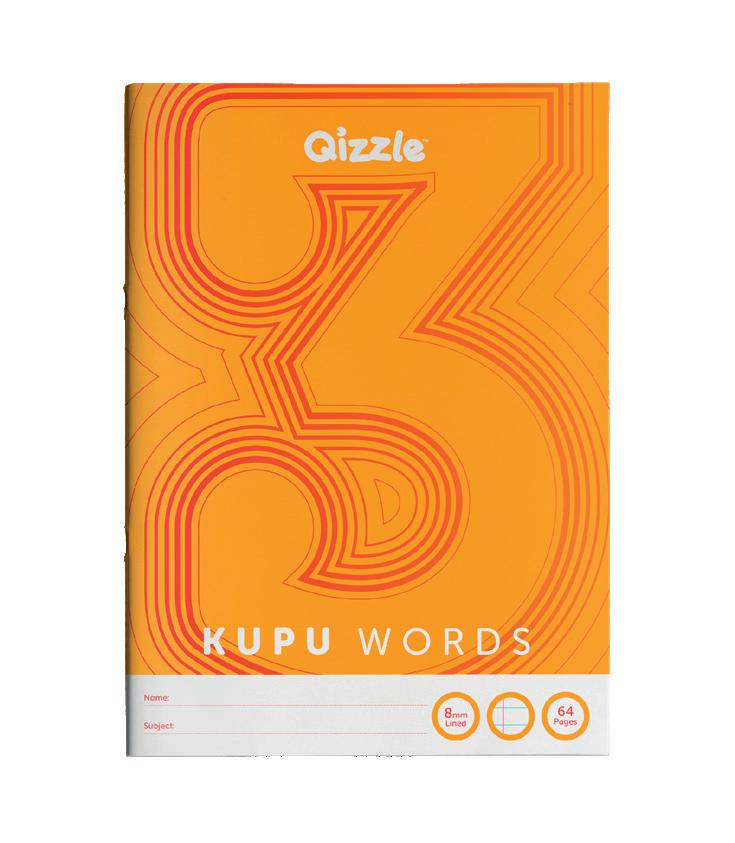




















“We love the flip-out learning supports, and the line size in all books, as well as the space for reflection at the end. Love the relatableness of the NZ theme. The students enjoyed talking to each other about the different supports provided in the books.” - Abbey C
“I love that the books are robust enough to withstand new entrant learners. They’re also great as they can easily paste an A4 sheet into the books, even when they are just learning how to line the sheet up with the page. The pages are thick and the books don’t fall apart when lots of pages have been glued in.” – Kendra F

MATHS HANDY Place Value Houses Wha! 5 4 8 2 3 4 1 am able to: am learning to: Teacher: Teacher: Date: Date: LEARNING GOALS Use a pencil write your goals MATHS CHIT CHAT My a egy My egy si ilar di f becau ould lik revise y think ng mp o y think ng by h d you s y th t would like o add I ag ee b use disagree b u e C you expla ? can onnec t this bec Wha hea d you y was… s that cor ? I d unde d kn y an is corr t becaus ot su about C you epe t that or ? Can y give m example so can und rstand? Anothe way t think of idea s.. An her st gy is I wa to add t tha ide would ke to b ild on wh said Wh you said make think Wh heard is So y e aying agre ith b cause My strategy is like y s becau Thi eminds me o I disag ee with b se Thi is just like Why did y use th a egy H w did y ? der why ? lik hat you said about bu y idea, h nk tegy think t w y Becausethey re 360degrees! Why c sorcles hot? KIWI CHOICE premium exercise books Call us today to get a free sample! 0800 600 123, or email customerservice@qizzle.co.nz Built to last! Super strong 350gsm cover with 4 staples in the spine! Te reo Maori on front cover promotes everyday use of Te reo Maori.Aligned with NZ curriculum Fully laminated cover can be used as a whiteboard A4+ (230 x 315mm) size means activities and worksheets don’t need to be trimmed before they are glued in. HAMISH 100% KIWI owneD MADE FOR KIWI KIDS DESIGNED BY KIWI TEACHERS SUPER STRONG COVER aligned with nz curriculum yellowhead mohua zip / nihokati Ng ngeru / cat Wh whare house Aa apple / poro Bb bush / ngahere Cc cloud kapua Dd dog / kurī Ee egg hua Ff fantail pīwakawaka Gg gumboots / kamupūtu Hh hand ringaringa Kk kiwi kiwi Ll lemon rēmana Mm morepork ruru Nn New Zealand Aotearoa Oo octopus / wheke Pp pukeko / pūkeko Qq queen kuīni Rr river / awa Ss seagull karoro Tt togs / kākahu kaukau Uu umbrella hamarama Vv volcano / puia Ww watch karaka Xx x-ray / whakaata roto Yy Zz Ii insect pepeke Jjjandals / haenarawaewae am able to: I am learning to: Teacher: Teacher: Date: Date: I Believe in you! LEARNING GOALS cr crown sheep ee feet You’re a star! fr fruit prprincess sl slide str strawberry splsplash book oo shampoo oa boat wr write aw paw autumn window wh wheel Use pencil writeyourgoals
NEED A NEW website FOR YOUR SCHOOL?
Fattastic websites
starting from $997+GST
Simply email enquiries@fatweb.co.nz your domain / website address, and we’ll send you a comprehensive audit of your current school website. And if you’d like to chew the fat after, we’re here to help.
1. We can write all the content for you and load it
2. We have made over 2000 websites, we know what we’re doing
3. People tell us our websites are the easiest to use, if you want to change any of the content, photos etc.







18 90 (03) 961 5184 sales@academygroup.co.nz www.principalstoday.co.nz FOR ALL ADVERTISING ENQUIRIES: 38 44 Working & Learning 11 CULTIVATING CHARACTER Fostering the young men of tomorrow 12 SIGN LANGUAGE IN NZ CLASSROOMS A step towards inclusive education 26 ELEVATING ELECTIVE CLASSES Emphasising the importance of choice 18 REDUCING MOBILE DISTRACTIONS What phone bans really mean 28 STUDENT WELLBEING IN MODERN EDUCATION The role of school counsellors for student wellbeing 27 EMPOWERING DIVERSE MINDS Innovative strategies for supporting dyslexia and ADHD in the classroom 32 THE FREEDOM TO LEARN Debunking home education misconceptions 34 SPEAKING VOLUMES Teaching public speaking in new ways 37 CODE LITERACY Transforming the curriculum for the digital age 38 UNDERSTANDING ONLINE SAFETY AND SECURITY Knowing the right online safety and security principles is crucial f or kura and schools NEWS 40 RESOURCES FOR EDUCATORS Teaching and influencing the next generation 44 STUDENT COUNSELLING Supporting student mental health in the classroom 46 PLAYGROUND SAFETY A comprehensive approach to protecting school children 56 ALLERGIES AND EXCURSIONS The risks students with allergies face on out-of-classroom trips 66 SPORTS FIELDS What you need to know about synthetic sports turf surfaces 74 HEALTHY LUNCHES Good nutrition always matters 78 STAYING SAFE AT SCHOOL The vital role health and safety strategies play in the dayto-day functionality of modernday classrooms and schools 84 THE ASBESTOS FACTOR Identifying and managing asbestos in your school 88 BREATHING EASY Creating well-ventilated spaces 90 SCHOOL FURNITURE Delivering comfortable and creative learning environments 94 SCHOOL SECURITY
your place safe
CAREERS CHOICES
into a watertight career with
Keeping
100
Taping
apprenticeships 0800 FATWEB www.fatweb.co.nz
MANUFACTURERS OF PREMIUM ECO-FRIENDLY WOOD-CHIP PRODUCTS FROM RECYCLED TIMBER
Ensure a safe outdoor environment - use Reharvest quality woodchips for playgrounds, equestrian arenas, landscaped gardens and public areas, available in Auckland, Hamilton and across NZ



Garden Surface
Reharvest® garden mulch ground cover for large scale revegetation projects such as motorways, schools and landscaping companies.

Playground Mulch
Have your children play on nothing but the best mulch, which is safe, eco-friendly and will last for years to comeCushionfall® can provide all of this!

Equestrian Surface Mulch
Cushionride® mulch is ideal for dressage arena surfaces, as it can help minimise injuries for horses, and help keep them performing at their peak level.

Coloured Garden Mulch
With four different colours available, coloured garden mulch is ideal for all types of garden sections, and is a cost-effective and attractive option.


Phone: 09 299 3999 / 0275 299 399 | Email: info@reharvest.co.nz www.reharvest.co.nz
Our changing curriculum
By Ben O’Connell

New Zealand’s Curriculum refresh has long been a major political topic. But have we lost sight of what really matters: a stable and meaningful education for Kiwi kids?
In September 2019, thenEducation Minister Chris Hipkins announced the overhaul, focused on wellbeing, identity, language, and culture. The new framework Te Mātaiaho took a more holistic and integrated learning approach that aligns with Māori educational priorities and learners’ diverse needs. The NCEA Change Programme came in February 2020 with similar aims, also looking to improve NCEA’s credibility and coherence.
Both Te Mātaiaho (focused on early learning to Year 13) and the NCEA Change Programme (with a secondary school focus) are part of a broader effort to improve the New Zealand education
system, making it more inclusive, equitable, and effective at preparing students for the future. The biggest change is Te Takanga o Te Wā, Aotearoa New Zealand’s Histories curriculum, introduced in 2023 with an inclusive focus on Māori history and holistic learning. The Government’s approach to education curriculum changes, particularly in response to Te Mātaiaho, starts with the basics: improving literacy and numeracy in the primary school curriculum. The National-led coalition’s plan includes daily focused time on reading, writing, and maths, yearspecific curriculum requirements, standardised testing, and resources for teacher support.
Ellen MacGregor-Reid, Hautū of the Ministry of Education’s Curriculum Centre, says the ‘one hour a day’ policy was introduced to safeguard teaching time for reading, writing, and maths, intending for teachers to deliberately and purposefully dedicate time to teaching core
“Teachers have repeatedly called for greater clarity about what to teach. Only 40 percent of schools reported being ready for the introduction of the new NCEA Level 1.”
- Education Minister Erica Stanford
skills. “Daily teaching has been shown to lift student progress when coupled with a highquality curriculum taught using evidence-informed teaching practices. It is not the metric for measuring student progress and achievement.”
Perhaps focusing on the basics is nothing new. In March 2023, Principals’ Federation president Leanne Otene told RNZ that National’s then pre-election plans were nothing new, a reiteration of policy they’d introduced when in power that had proven unsuccessful. She agreed a focus on foundational skills was needed, but not in this way.
“Teachers have repeatedly called for greater clarity about what to teach. Only 40 percent of schools reported being ready for the introduction of the new NCEA Level 1,” Education Minister Erica Stanford says, reasoning the delay of NCEA Change implementation by two years.
Chris Abercrombie, president of PPTA Te Wehengarua, said secondary teachers were pleased the education minister had listened to their concerns about the need for the curriculum changes to be more aligned with the assessment changes.
“This pause will give time to embed the changes to
8 | Term 2, 2024

the teaching and learning programmes that we need to ensure the implementation of Level 1 is manageable and for learning from this to be part of the development and lead-in for levels 2 and 3,” he said.
“Making sure curriculum development is ahead of the assessment changes is an important development,” said Kate Gainsford, Chair of the Secondary Principals’ Council. “However, we also recognise that the delay will be a source of frustration for schools who have done a significant amount of work on subjects that were to be introduced for assessment at the new Level 2 next year. Nevertheless, NCEA remains a robust qualification, and a better experience for students and teachers is on the way.”
On history changes, since the Labour Government implemented the new Aotearoa New Zealand Histories curriculum in 2023, National and ACT have outwardly objected to it. Now, the two parties want to “restore balance” to Aotearoa’s history curriculum, but what does balance mean for the rightwing Government?
In 2019, National’s Education spokesperson Paul Goldsmith said the curriculum risked rendering our history as a simple division between oppressors and victims”. In a select committee submission, he said it chanced “narrowing our children’s view of the world” but noted the previous way of teaching chanced students not grasping New Zealand’s past.
In his January state-of-the-nation speech, David Seymour called for a curriculum “moving away from the idea that colonisation is to blame for all our problems.” ACT’s new education policy said, “The curriculum divides history into villains and victims, contains significant gaps, and pushes a narrow set of highly political stories from our past. We want children to be empowered and equipped with knowledge of the world they live in, not a narrow fragment of it promoted by the Ministry of Education.”
One ERO report noted that because schools were prioritising
Aotearoa New Zealand Histories, other subjects like geography and economics had been crowded out. The Education Review Office has also found that not all of the content is being taught yet. Many schools are prioritising local histories rather than national events, and schools are also teaching less about how New Zealand’s histories link with global contexts.
“It is important that studying Histories teaches all students key skills, such as critical thinking, as these skills are important for their futures,” says Ruth Shinoda, Head of ERO’s Education Evaluation
“It is important that studying Histories teaches all students key skills, such as critical thinking, as these skills are important for their futures.”
- Ruth Shinoda
Centre. The positives outweigh the negatives, though. Ruth also celebrated how two-thirds of parents have seen learning about Aotearoa’s history as useful for their child’s future.
Ultimately, both sides agree on the need for a strong education system; finding a long-term common ground is key. New Zealand’s curriculum refresh has been a political football for too long, and it’s at the expense of our nation’s children.

Term 2, 2024 | 9 News | The Curriculum










COLLECTION BOXES NOW AVAILABLE IN TWO SIZES: TOKEN COLOURS AVAILABLE: Red Green Yellow Dark Blue Teal Magenta Purple Orange Black White Gold Silver 140mm x 140mm x 250mm 190mm x 190mm x 400mm Reinforced corners Hinged security lid for easy emptying Secure screwed lid for security while in use Super-tough food-grade perspex Made in New Zealand ORDER NOW!
Cultivating character
Fostering the young men of tomorrow
By Paige O’Brien and Ben O’Connell
St Thomas of Canterbury College principal
Steve Hart has led the secondary school for two decades. Like every school nationwide, change is constant and essential.
Over the last ten years, the student body has diversified and increased by 100 students. New buildings have been built, and old ones have been demolished. Long-standing staff have retired, and new staff and roles have emerged. Yet the culture remains the same.
Steve believes that educating students’ hearts comes before educating their minds. Having a very diverse community helps to foster a culture of acceptance and belonging. “Culture is at the heart of all we do,” he says.
“A big part of the culture at St Thomas is that our students understand who they are, what is important to them, and that they don’t have to change who they are to fit in.”
He considers identity struggles to be the biggest challenge facing young men today: an ability to believe in themselves and to have high expectations of what they can achieve. The importance of emotional intelligence and interpersonal relationships cannot be ignored.
“A sense of belonging really is the key to bringing out the best in young men both in school and beyond.” He says the most important aspect of what happens inside the classroom is developing character.
“Subjects are a vehicle to teach resilience, commitment, authenticity, and interpersonal skills, to name but a few. If we enable our students to leave school with these developed character traits, they can learn anything.”


In the wake of the coronavirus and David Seymour’s truancy approach of fining parents, attendance rates are a pertinent topic. Steve thinks that fining parents wouldn’t solve the problem.
“Attendance, on the whole, for the majority of students, is about creating an environment that students want to attend, a place they belong and a place they feel safe. Some of the challenging attendance issues we face are far more complex and need an individualised approach.
“We are in the business of teenagers and their developing brains. If you add neurodiversity, poverty, behaviour underdevelopment and learning difficulties into the equation, it does add a complexity that I am not sure the general public appreciates.”
Student needs are also changing. “The ability for teachers to build respectful, trusting, and caring relationships with students is still the most important tool in raising achievement.

“No two students are the same. Parents of multiple children will fully understand this.
“I often tell parents that if students are to cross boundaries, school is the place to do it. Here we have support and mechanisms in place for our young people to learn from.”
Steve says that students are better off making mistakes in a school setting because there are mechanisms to support learning and growth. Beyond school, those resources aren’t available, and young people are more likely to be on their own.
“As a society, we need to focus on developing our young men to find their place in the world.
“Our role as a leading boys’ school is making sure that we aren’t producing a lost generation of boys but a grounded, emotionally connected, relational generation of young men.”
The full Q+A with St Thomas of Canterbury College principal Steve Hart will be featured in the next Principals Today.
Term 2, 2024 | 11 News | Principal Q&A
St Thomas of Canterbury College principal Steve Hart
Sign language in NZ classrooms
A step towards inclusive education
By Paige O’Brien
Sign Language, specifically New Zealand Sign Language (NZSL), is one of New Zealand’s official languages alongside English and Te Reo Maori.
Despite this status, NZSL is not widely taught or utilised in educational settings as it should be. Integrating NZSL into New Zealand classrooms not only respects its status as an official language, but may also bring numerous benefits to the education environment and society at large.
Recognition of diversity and inclusion
Teaching NZSL in schools is a powerful step towards embracing diversity and
promoting inclusion. It acknowledges the deaf community as a vital part of New Zealand’s society.
By incorporating NZSL into the curriculum, schools send a strong message that diversity in language and communication is valued and respected, fostering an environment of acceptance and understanding among students.
Enhancing communication skills
Learning NZSL can significantly enhance students’ communication skills. It introduces them to a new dimension of human interaction, encouraging empathy and the ability to understand perspectives different from their own.


IN-PERSON NZSL COURSES
We have a team of NZSL teachers who offer a variety of NZSL courses across Aotearoa
IN-PERSON WORKSHOPS
We can come to your workplace to deliver NZSL & Deaf Culture Workshops


ONLINE COURSES/WORKSHOPS
We provide online NZSL classes for workplaces and communities
ANNUAL NZSL CAMPS
We host annual NZSL camps throughout New Zealand, which are also great opportunities for professional development

Please get in touch with us if you are interested in private courses/workshops please contact admin@nzsl4u.com
E www.facebook.com/nzsl4u Q www.instagram.com/nzsl4u
www.nzsl4u.co.nz

It also equips them to communicate with the Deaf and hard of hearing, breaking down barriers and fostering inclusive communities.
Cognitive and academic benefits
Research has shown that learning a second language, including sign language, can have numerous cognitive benefits. These include improved memory, attention to detail, and problemsolving skills.
Additionally, students who learn NZSL may experience increased creativity and flexibility in thinking, attributes that are highly beneficial in academic settings and beyond.
Promoting equality and accessibility
Incorporating NZSL into the curriculum promotes equality and accessibility in education. It ensures that Deaf students and those with hearing impairments can access education in their first language, which is crucial for their academic success and personal development. It also raises awareness among hearing students about the importance of accessibility and the challenges faced by their Deaf peers, fostering a culture of support and equality.
Supporting NZSL’s official status
Despite being one of New Zealand’s official languages, NZSL often does not receive the same level of support or recognition as English and Te Reo Maori.
Teaching NZSL in classrooms is a step towards rectifying this imbalance. It supports the preservation and proliferation of NZSL, ensuring it continues to be a living, vibrant part of New Zealand’s linguistic heritage.
Integration
Integrating New Zealand Sign Language into the classroom is more than just adding another subject to the curriculum; it’s about fostering an inclusive, diverse, and empathetic society.
It not only benefits Deaf and hard-of-hearing students but enriches the educational experience of all students, teaching them valuable life skills such as empathy, communication, and respect for diversity.
As one of New Zealand’s official languages, NZSL deserves recognition and inclusion in educational settings to ensure its preservation and to promote a more inclusive and understanding society.
12 | Term 2, 2024 News | Sign Language




Slash Your Storage Costs!!! Save Thousands $$$ Looking for Sliding Storage Systems? for a quote!! Ex Hire Lundia & Hydestor Systems Now Selling Up to 60% off retail Near New-Lundia-Sliding & Static Shelving NOW Admin Furniture available up to 60% cheaper than new Call Mike today Ph 0800 42 42 47 Email: advancehire@xtra.co.nz SHELVING SOLUTIONS – Auckland • Wellington • Christchurch • All areas Serviced www.advancehire.co.nz / www.shelvingsolutions.co.nz / www.cabrafurniture.co.nz
By Ben O’Connell
Our new Education Minister Getting to know Erica Stanford

 Education Minister, Erica Stanford
Education Minister, Erica Stanford
Erica Stanford assumed the education and immigration portfolios when the National-led coalition government was formed in October last year. But what are her main education focuses?
In her maiden speech, Erica Stanford discussed her community values, background producing reality television, and how it bothers her that environmental protection is cast as a left-wing issue.
“Mr Speaker, I love seeing the world through my children’s eyes,” she said. “I love seeing how “normal” can change so much from one generation to the next. It will be normal for my children to have a young female prime minister. It’ll be normal for them to have their marriages defined by love and not by gender. It’ll be normal for them to think about sustainability in every aspect of their lives.”
Her home is the East Coast Bays, also home to the largest high school in New Zealand, Erica’s alma mater. “I went to Rangitoto College in Auckland, where I met my husband,” she says when I ask her the Cantabrian hello of “What school did you go to?”
“Our daughter attends the same school now. It is an incredible school for academics, sports, music and arts. I was a hockeyplaying bassoonist, so it was the perfect school for me.” Erica’s bottom line is ensuring all young people achieve at school and are confident in their abilities.
Erica says the recently announced targets for improving student achievement are her
main priority. “We are going to lift achievement by ensuring students have an hour a day of reading and writing. Getting the basics right sets children up to achieve.
She adds that more students are now expected to be at curriculum levels. By December 2030, 80 per cent of Year 8 students will be at or above the expected curriculum level for their age in reading, writing, and maths.
As if overseeing the immigration portfolio isn’t enough, especially amid international catastrophe, the Education Minister’s role is jampacked. Most recently, the coalition Government has made changes to the NCEA Change Programme, with further Curriculum Reform package components to follow soon.
She says the NCEA Change Programme introduced by the last Government is fundamentally flawed because it designs the assessments before writing the curriculum that details what students should be learning.
As such, the coalition Government is making significant changes to the programme, delaying its implementation by two years to develop the secondary curriculum of Year 11-13 subject areas before introducing new assessments.
“Ensuring New Zealand’s curriculum is world-leading is a vital part of the Government’s plan to deliver better public services and ensure all students receive the education they need to set themselves up for further study and life.”
On the changing curriculum, a recent ERO report “found teachers had been overwhelmed by the
14 | Term 2, 2024 Profiles | Erica Stanford
scale of change required and did not have the skills or time needed to develop bespoke, local curriculum documents,” she said.
“The ERO report into the Aotearoa New Zealand Histories curriculum reinforces what our Government has been saying for some time – that to turn around New Zealand’s declining levels of achievement, we need a gold-standard curriculum that provides clear guidance to teachers about what students should be learning each year at school.”
In January she announced an inquiry into school property projects, one she insisted was “absolutely not” a costcutting exercise. She said the Government had inherited a system “bordering on crisis”.
students. On rainbow student well-being, she says bullying of any kind for any reason is absolutely unacceptable, and that every student should feel safe and respected at school.
On students with disabilities, she says every child has a right to a good education. “We encourage schools to consider disabilities when designing and doing property upgrades.
“Structured literacy for children living with dyslexia is especially important. I am also working on changes to ITE training for teachers to ensure they have the tools they need to support children in this area.”
The phone ban is another hot topic. Erica says that schools have discretion on whether a mobile phone is needed in a
“Structured literacy for children living with dyslexia is especially important. I am also working on changes to ITE training for teachers to ensure they have the tools they need to support children in this area.”
“There have been a number of cost escalations and some schools expecting exciting, bespoke building projects that are not able to be delivered on,” she said.
“Within weeks of forming a Government, the Ministry of Education had already paused 20 building projects and informed me that there could be up to 350 projects in various stages, from design through to pre-construction, where expectations far exceeded what could be delivered.”
She said it was important to be clear that the Ministry of Education had paused some building projects while it reviewed their affordability, but it had not stopped all building work. Independent reviewers will report their findings by June.
On catering to all students’ needs, Erica directed me to the Ministry of Education’s range of support for young people and
lesson, say, if children are filming for a project or the like. “The cell phone rules don’t affect other devices that young people may need for learning.”
She says that the coronavirus pandemic didn’t impact decision-making around the phone ban despite the ways the Internet connected our isolated society. Alas, reconciling BYOD in the classroom alongside new phone bans might take schools some time.
Finally, on the topic of school lunches, around 230,000 students benefit from the scheme today, delegated by the Associate Minister of Education.
“I want to reassure people that school lunches will continue,” Erica says. “While the programme is under review and changes may be made, it will continue.”
All eyes will be on Education Minister Erica Stanford as schools continue to transform to meet modern student needs.
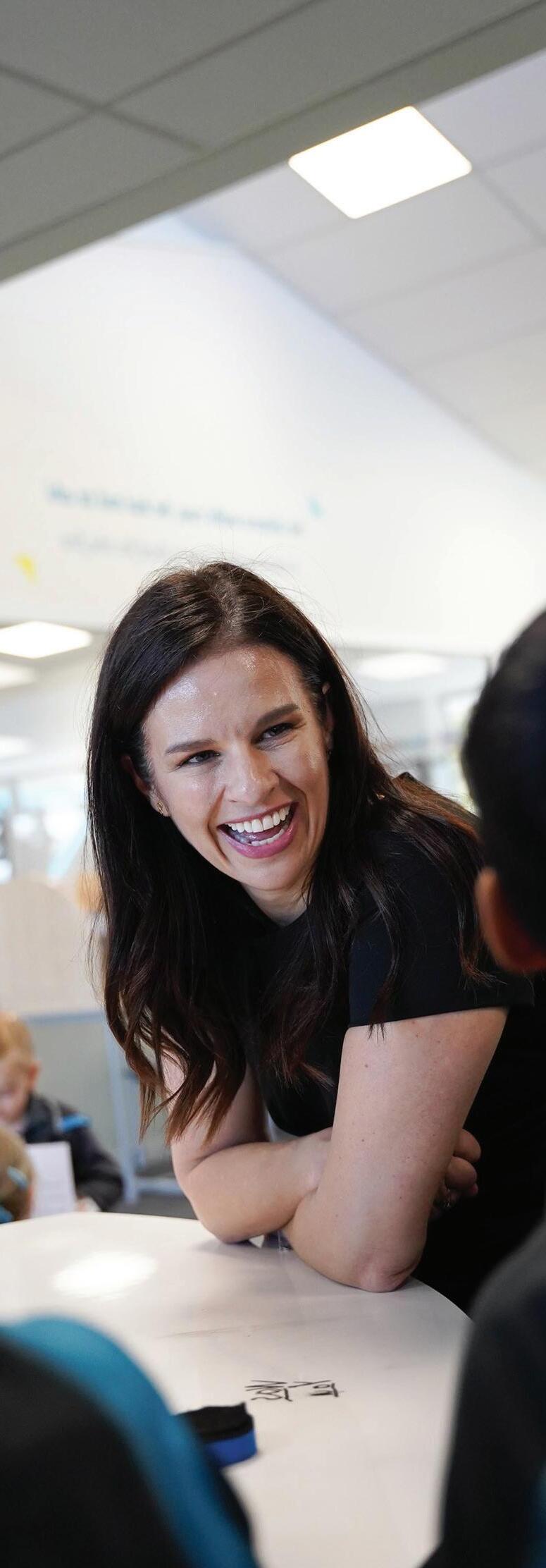
Term 2, 2024 | 15 Profiles | Erica Stanford




What phone bans really mean
By Ben O’Connell
The phone ban’s proposed benefits are great: improved student focus and mental well-being, enhanced engagement with fewer disruptions, boosted achievement and social interaction. But is it too good to be true?
18 | Term 2, 2024
Active from the start of Term 2, so on April 29, the phone ban will forever change how New Zealand schools operate. Schools must ensure students don’t use a phone on site, including during lunchtime and breaks, though there are some exceptions.
The Ministry of Education emphasises the policy’s goal of maximising focused learning time. “The ‘phones away for the day’ policy is intended to benefit all learners,” says Jennifer Fraser, General Manager of Schools Policy. She adds that the policy does not prescribe screen time limits for learners.
“The policy will help maximise class time to lift achievement, a goal supported by new requirements for all primary and intermediate students to be taught an average of one hour a day of each of reading, writing and maths.”
The ‘phones away for the day’ policy is designed to remove distractions in the classroom,” says Ellen MacGregor-Reid, Hautū of the Curriculum Centre. “New Zealand schools and overseas jurisdictions that have already introduced restrictions on cell phones have reported better concentration and engagement in class and an improvement in student achievement and wellbeing. This policy means that all learners throughout the country will experience the associated benefits.”
The policy isn’t a blanket ban on technology. Education Minister Erica Stanford says that schools have discretion on whether a mobile phone is needed in a lesson if children are filming for a project or the like. “The cell phone rules don’t affect other devices that young people may need for learning,” she says, noting that schools draw the line between BYOD and phone bans themselves.
Erica says that the away-forthe-day ban has received overwhelmingly positive support from the education sector, including from the Education Review Office. They found that cell phone use in class has been causing classrooms to be more disruptive and that banning

them could lead to increased achievement. PPTA President Chris Abercrombie has said some unexpected effects include students talking to each other more and being forced to learn to read analogue clocks.
The policy doesn’t come without concerns. Enforcing the ban consistently across schools and all ages and losing phones as a valuable learning tool are two. Students who rely on phones to contact parents or manage health concerns may also struggle, especially if an exemption is denied. Emergency procedures will also be more complicated.
Phone bans globally clue us into the potential future. Several British schools and Chinese provinces have school-hour phone bans, but equity and technology access concerns persist. In 2018, France banned phones in all primary and secondary schools. Studies suggest increased focus and decreased cyberbullying. However, enforcing the ban consistently across all schools remains a challenge.
Students still have computer access. Snapchat and other distracting social media platforms are widely PC accessible. 2022 PISA results found that Kiwi students ranked fifth in the world for being
The ban also raises concerns about inclusivity, mainly for students who rely on phone-based tools for their educational needs. This policy could disproportionately affect students with learning disabilities who use their phones to assist with reading, writing, and spelling.
distracted by digital devices, with around half of students reporting they become distracted in most or every lesson. The phone ban will decrease distraction levels, but the crafty nature of students cannot be underestimated. Amid the ban, schools will have to closely monitor the technology available to students during the day.
The ban also raises concerns about inclusivity, mainly for students who rely on phone-based tools for their educational needs. This policy could disproportionately affect students with learning disabilities who use their phones to assist with reading, writing, and spelling. “We’re not just talking about taking phones away; we’re taking away essential learning tools from those who need them the most,” says senior educator DC Harding.
So, who gets an exemption? Neurodiverse students whose schools refuse them ban exemptions are forced to find new strategies to manage the day. Diabetic students who must monitor their blood sugar levels epitomise a newfound issue for kids with medical conditions. The problem is that students might be reluctant to receive an exemption. “You don’t want to be the kid that gets to use their phone,” Chris Abercrombie said. The phone ban’s success depends on striking a balance between minimising distractions and fostering a thoughtful environment where all students can thrive. Only once schools work out teething issues around enforcement, accessibility, and monitoring will the phone ban’s true value be determined.
Term 2, 2024 | 19 News | Technology
Your smile is your statement
The team at Millwater Dental are committed to ensuring their clients get the best care possible.
Their philosophy is that tooth structure is precious and should be preserved whenever possible. They provide a wide range of dental treatments including family dental care, orthodontic teeth straightening, aesthetic solutions and comprehensive rebuilds.
Millwater Dental knows your smile is your statement. Subtle changes can be the difference between a nice smile and a great smile.
Everything they do reflects those details, from the colour, size, shape and alignment of the teeth to the framing of the teeth by the gums, lips and face.
The team use the latest dental technology and techniques
to give you a smile, with care, compassion and utmost respect. They seek to understand your dental problems and create smiles by carefully considering your dental needs.
The team use the latest dental technology and techniques to give you a smile, with care, compassion and utmost respect.
Using a holistic approach, they thoroughly assess your oral health for oral cancer, gum disease and jaw function and then advise you of any health risks. X-rays, digital scans of your teeth and jawbones, photos, study models of your teeth and NIRI (near infra-red imaging) to scan the internal structure of the teeth may also be used to help diagnose your oral condition. This information is used to create a personalised dental plan for you.

Because Millwater Dental values family, they offer free routine dental treatment for high school teenagers from year 9, up to 18 years of age while attending an education facility. This is yet another way Millwater Dental cares about their clients. Millwater Dental's Comprehensive Care Experience is a one-hour appointment with the dentist, usually on your first visit, where they look at the condition of your mouth, teeth and gums.
Smiles designed for you
Here at Millwater Dental we aim to provide a relaxing environment where the whole family can enjoy their time without the anxiety that can sometimes accompany a trip to the dentist.
We use the latest in digital technology to help minimise discomfort and bring you the best possible treatment outcomes.
Please contact us to make an appointment, or ask our friendly team any questions you might have.
09 972 1518
Suite 21, 175 Millwater Parkway, Silverdale 0932, Auckland
www.millwaterdental.com
For more information, visit www.millwaterdental.com or call 09 972 1518.
You can pop in and see the team at Suite 21, 175 Millwater Parkway, Silverdale, Auckland.





COMPREHENSIVE CARE
Our Comprehensive care experience starts with a one-hour appointment with the dentist, where together we discover the condition of your mouth, teeth, and gums. We can then formulate a personalised dental care plan just for you.
Invisalign is a teeth-straightening system that can help you correct bite issues and, depending on complexity, achieve your dream smile in as little as six months.
CARE FOR ALL THE FAMILY
We use the latest in dental technology and techniques to give you a smile with care, compassion, and utmost respect. We seek to understand the dental problems you may have and create smiles by careful consideration of your dental needs. - Smiles by design

21, 175 Millwater Parkway, Silverdale 0932, Auckland
9 972 1518 reception@millwaterdental.co.nz
INVISALIGN Suite
0
www.millwaterdental.com

‘Tight, loose, tight’
How to design a balanced curriculum
By Rob Clarke CEO of Learning Architects
22 | Term 2, 2024
approaches to its design; there is no ‘one right way’.

Perhaps your school has clarified what key competencies look like, maybe you’ve devised a graduate profile, or your own sets of progressions.

With term two underway and the school year ramping up, you’ll be starting to make headway with core business.
Also, as the new government settles in and appears to be close to clarifying ‘what next’, you’ll be keeping an ear to the ground as you get on with business as usual; this probably includes refreshing your curriculum and the challenge of how to balance it all.
In addition to the opportunities it brings, Te Mātaiaho throws down a number of meaty challenges - to become culturally responsive and inclusive, to connect curriculum to issues of importance to your local community, and to raise expectations. And then of course, there is the ever ‘hot potato’ issue of why, what, and how you assess.
Whatever happens with any future Ministry directives, it is always going to be important to clearly measure the impact of the curriculum.
But without an inclusive, well-supported, easy to use curriculum (whatever that might look like for you and your team), you could end up measuring the wrong things.
While it will depend on a range of factors and be influenced by the uniqueness and needs of your community, it’s important to get your curriculum ‘right’ before identifying assessment methods.
The challenge of developing a localised curriculum
The necessary flexibility every school has to allow its relevant curriculum development means that there is a myriad of
Whatever approach/initiatives you’ve developed, hopefully you’ve looked at how relevant the subject matter is to your students, and how this is delivered; maybe you are trying to improve inclusivity and accessibility of your curriculum to develop selfregulating learners or trying to incorporate more te reo, tikanga, and mātauranga Māori.
There is much to think about and developing a curriculum is inevitably a continual work in progress. One of continuous improvement.
And while this approach to developing localised curriculum provides plenty of opportunity to be innovative, it can also create or highlight a few gaps.
For example, when you are employing staff who are coming in from a different school in another part of the country, the local curriculum they were working with was quite possibly different and they will need to be open to learning yours.
Have things got a little messy?
Given this continuous improvement and constant change, it’s likely that your school’s curriculum has evolved over the past 10 or so years as you’ve adopted different programmes and initiatives.
This may have resulted in a programme that is becoming cumbersome, crowded and unwieldy to deliver. If this is the case, then it’s important to unravel what’s in place first before you can begin.
Perhaps balance is an issue with your curriculum leaning more heavily towards topics that your teachers feel comfortable teaching.
Maybe there’s plenty of maths, reading and writing already woven throughout everything you do and it’s being able to demonstrate this simply and obviously that’s the tricky part.
Or maybe one team in the school has too many events happening, for instance, EOTC or sports, and this is making it difficult to ensure a consistent programme in other areas.
Beyond the day-to-day facets of keeping your curriculum balanced and relevant, there is the continuous chatter about increased government centralisation of some aspects of the education system.
This was a key topic for discussion at the recent NZPF Moot in Wellington where Bali Haque (the former principal who led the review of the Tomorrow’s Schools policy), spoke about what the government might undertake that would be more helpful for schools, versus those that would dilute the potential impact of a localised curriculum.
In particular, when thinking about measurement, he spoke about the concept of ‘tight, loose, tight’ when considering localised curriculum, and to what extent central government might perform this in our decentralised education system. He explained it as being:
• Tight on outcomes and objectives that are specified
• Loose in how you achieve them; it is up to you, and
• Tight on accountability.
How do you know when you’ve got the balance right?
In the study ‘Variable in/ by design’, released by The Education Hub in 2023, Dr Nina Hood explores the variable nature of curriculum design and instructional materials in schools.
Results from this study indicate there is (or may be) significant variability in how teachers approach curriculum design.
Thinking about Harque’s ‘loose’ aspects, there would certainly still be the freedom to be creative within your localised curriculum, so how do you know when you’ve got the balance right?
The study found that “over 50 percent of teachers have not received effective professional development related to curriculum design”.
Continued on Page 26 >
Term 2, 2024 | 23 News | Inside Education
Rob Clarke CEO of Learning Architects

It also implies that developing teachers with a strong understanding of the content within the curriculum (as well as skills in how to engage students in that content) is a priority. Reflecting on these findings, I believe that this leadership challenge involves developing teachers’ content knowledge and their capability to engage students skilfully, while at the same time (just as you do with your learners), enabling teachers to be curious and discover new learning opportunities, and be able to identify credible resources.
Critiquing your curriculum is a logical starting point when reviewing its balance. Using the SWOT framework (Strengths, Weaknesses, Opportunities & Threats) can help broaden the thinking as you do so:
• Strengths - what is working well right now? What are you proud of and why?
• Weaknesses - what isn’t going well?
• Opportunities - what new ideas/trends are there that you might consider? Which strengths could afford you new opportunities? What is going on locally that you could capitalise on? What might increase achievement/ progress/satisfaction?
• Threats - what external factors could affect your school? In what ways is your school vulnerable?
Some great prompts already exist in Te Mātaiaho in the form of the curriculum principles.
The principles of Te Mātaiaho and the accompanying calls to action can add depth to your curriculum review, especially if combined with a framework such as the SWOT.
If you treat them similarly to the former NZC principles, then you can use them as a lens through which all school decision making happens (which was the intention of the principles in the first place).
When teachers can identify why they have chosen a particular topic or idea, then they are well on the way to becoming curriculum designers.
Examine how decisions are made
Enabling your team to think like designers and remain curious as they review your existing curriculum may help them to identify strengths and opportunities for further development.
This can take time, but will create possibilities for simplification, balance, connections and innovation.
Once everyone appreciates or understands the need to question underlying reasons a little more intentionally, you might uncover opportunities to broaden the possibilities, simplify, or even create new approaches.
These may relate to all sorts of aspects, for example: the quality of teaching resources, different teaching approaches, additional PLD to provide, and so on.
Questions that might help stimulate this type of thinking (some of which might seem very basic, but are fundamental to success and often overlooked in the rush to do something new, or just ‘get it done’):
• What is our purpose as educators in this school?
• What is important for our students to learn?
• How will we judge when students have learned what is important for them to learn?
24 | Term 2, 2024 News | Inside Education
While it will depend on a range of factors and be influenced by the uniqueness and needs of your community, it’s important to get your curriculum ‘right’ before identifying assessment methods.
• Where do we get resources from, and how do we know these resources are appropriate?
• When you plan, how do you decide what topics to teach? Where do your ideas come from?
• To what extent do we take information from students or their families to inform our curriculum planning?
• What issues inside or outside of our local community are important to our students and why?
• To what extent do we aim to connect different learning areas using big ideas/concepts?
• In what ways might we simplify our curriculum?
Stimulate a designer mindset
When teachers can identify why they have chosen a particular topic or idea, then they are well on the way to becoming curriculum designers.
This justification is important because when we make clear links between student needs, local community aspirations and our national curriculum, then it is more likely that your curriculum will be relevant and engaging. For example, if teachers are deciding the topics based on what is familiar to them, this may limit your curriculum, or they are spending hours creating resources when there is a quicker and easier way to do it.
Whatever issues or constraints you uncover, it may well be time to look at ways to provide additional support:
• Provide teachers with opportunities to expand their knowledge in an area of interest/passion
• Build in release time to plan together
• Identify and provide higher quality, more accessible resources
• Conduct research into community and/or student need
• Provide inspiration through professional reference materials
• Look at how other teachers are teaching specific topics. And remember, we are talking about localised curriculum here, so bringing it back to what is important for your students and your community is the key.
Because every school is different, there are likely to be quite different starting points to how you might approach this process. Have a go at thinking like a curriculum designer and imagine you are:
• A new teacher who is looking at the local curriculum - what might they see?
For example, will they see content progressions across all the eight learning areas, or will they see a disparate mishmash of documents that have been bolted onto each other over the last few years?
• A parent looking to enrol their child - what does the content on your website emphasise, and does it show what is valued?
For example, does your website reflect the richness and diversity of what happens throughout your school?
• A senior student in the last year of the school - what would you say about their learning experience? For example, how did it make them feel at different stages?
What would be the most memorable aspects for them?
Maybe there is a specific project that was a highlight,

did they love the use of technology or were there not enough access to devices?
• An ERO reviewer or other visiting expert - what might you notice about your curriculum?
Perhaps they notice that there are strengths in your mathematics programme, or maybe your middle school teaching is particularly strong at enabling student voice?
The reality is that at the moment we are in a state of limbo with regards to assessment that may become more centralised.
But for now, whether it is stationery orders, new playgrounds, or what/how you teach that gets centralised, if you are clear about the why, what and how of your curriculum, then you will be better prepared to adapt once we have a better picture regardless of what is to come.
Whether it’s really tight on outcomes, and objectives, and accountability, as long as there is a bit of ‘loose’, we can continue to work on blending the art and science of your localised curriculum. That is where the fun and the magic happen!




Term 2, 2024 | 25 News | Inside Education
Elevating elective classes
Emphasising the importance of choice
The educational system in New Zealand, as in many parts of the world, is a mix of compulsory and elective subject choices that aim to provide a comprehensive learning experience for students. From Year 9, students begin their secondary education with core compulsory subjects such as mathematics, English, science, social sciences, technology, and health and physical education.
The curriculum offers more flexibility as they progress, allowing for personalised learning paths that cater to individual interests and career goals. This approach not only stresses the importance of foundational knowledge but also highlights the significant benefits of elective classes for students, a facet of education that deserves a closer look.
Elective classes offer students the opportunity to explore subjects outside the core curriculum, creating a sense of autonomy and personal growth. These classes play a crucial role in helping students build their identities and discover their passions, contributing to their overall wellbeing and academic success.
The connection between mental health and electives, while not always explicitly highlighted, is profound. Electives provide a space for students to be themselves and engage in work that they feel passionate about, which is essential for social and emotional wellness.
The benefits of elective classes go beyond personal development to academic performance. Studies have shown that when students have the freedom to choose their subjects, they exhibit greater satisfaction and achieve higher academic outcomes.
By Jamie Quinn

This increased engagement and enjoyment in learning are essential, as academic performance at the secondary level is a strong indicator of future success in higher education and the workforce.
Contrary to the traditional emphasis on foundational learning, the modern workplace values a wide range of transferable skills, such as critical thinking, analysis, and writing abilities, which students can develop through a diverse selection of electives.
Elective classes also encourage the application of knowledge and skills across different areas of study. For instance, a student who thrives in drama class may become more confident in public speaking, benefiting their presentations in other subjects. Similarly, food tech and carpentry classes are perfect examples of applied learning, where students use math concepts and technical reading in real-world contexts. This cross-pollination of skills and the holistic approach to education that electives facilitate supports the idea that success in one area can positively influence performance in others.
However, the greatest challenge facing the implementation of elective classes is often funding. The costs associated with staffing, facilities, and resources can be significant, leading some schools to limit their elective choices.
This financial constraint undermines the very courses that keep students engaged and motivated. Without the opportunity to pursue their interests, students are more likely to disengage, skip school, or simply tolerate their educational experience rather than thrive.
Elective classes are not just an add-on; they are essential tools
of a well-rounded education that prepares students for the complexities of the real world. By allowing students to explore their interests, develop new skills, and apply their knowledge in different ways, electives contribute significantly to academic success, personal growth, and future employability.
Educational policymakers and school administrators should prioritise a wide range of elective classes. Ensuring that every student has access to these opportunities is not just an investment in their education; it’s an investment in their future.

26 | Term 2, 2024
News | Elective Classes
Student Wellbeing in Modern Education
The role of school counsellors for student wellbeing
The concept of ‘student wellbeing’ covers the extensive range of a student’s health aspects, including physical, mental, emotional, social, and spiritual wellbeing.
The concept of ‘student wellbeing’ covers the extensive range of a student’s health aspects, including physical, mental, emotional, social, and spiritual wellbeing.
This comprehensive view recognises the significant impact that student wellbeing, or its absence, has on their mental health and academic success. Therefore, prioritising student wellbeing in education is crucial, aiming to empower students to achieve their fullest potential.
Growing up in a complex world, young people encounter numerous challenges that go beyond academic life, often stemming from broader societal issues. These challenges can deeply affect a student’s wellbeing. Schools are in a prime position to work alongside other agencies and the community to confront and alleviate these issues. By creating an environment marked by safety, consistency, and connection, schools can serve as safe spaces for youth, offering the necessary support for their development.
School guidance counselling significantly promotes student well-being. This role, filled by individuals proficient in counselling theory and practices, focuses on establishing supportive relationships with students to aid their identity development, boost their resilience, and provide them with tools for navigating interpersonal relationships. Effective counselling aims to empower students’ coping abilities and create positive life changes.
In 2018, 62% of secondary school principals reported needing but not being able to access
external expertise to support students’ wellbeing. This need was particularly pronounced in decile 1 and 2 schools, indicating a potential disparity in access to resources for students from lower socioeconomic backgrounds.
President of the New Zealand Association of Counsellors (NZAC) Sarah Maindonald says, “We have recommended and advocated for some time a change in staffing ratios to ensure one counsellor to 400 students. The American Counselling Association actually
home visits.” Counsellors are now often used as a crisis service, with students having to be triaged according to how severe the issue is.
Schools are struggling with an increase in mental health issues among students. In 2021, 82% of teachers observed a rise in these concerns. Additionally, the impact of online incidents spilling over into schools and affecting the learning environment has added a new layer of complexity to the challenges schools face.

“There is a constant preoccupation with peer texting and online platforms: doing streaks for Snapchat, Instagram, etc. It’s often unmonitored and unsupervised, so it is open to bullying and abuse by peers and adults, grooming online and misinformation.“
recommends 1 to 250. Some schools in NZ have 1 to 1000. This is a matter of student safety, particularly given our high youth suicide rates and pervasive mental health concerns.
“Many counsellors around the country have to run constant wait lists, which risks safety issues sitting on these lists, unknown to the counsellor or the school. The biggest problems are volume and complexity, so it would also take the pressure off in terms of having time to collaborate with other professionals and do more
Sarah says, “There is a constant preoccupation with peer texting and online platforms: doing streaks for Snapchat, Instagram, etc. It’s often unmonitored and unsupervised, so it is open to bullying and abuse by peers and adults, grooming online and misinformation. On the other hand, access to the Internet broadens their ability to access the world in terms of education and connection in terms of research and connection.”
Social media offers a platform for students to express themselves,
By Jamie Quinn
connect with others, and find support, particularly beneficial for those feeling isolated or facing challenges. However, excessive use can distract from important activities, disrupt sleep, and expose students to cyberbullying, potentially leading to mental health issues.
Unlike traditional bullying, cyberbullying can be relentless, following victims home via their digital devices. To counteract these issues, schools must strive to establish a bullying-free zone. Many schools are actively implementing effective antibullying strategies, and those with effective measures in place report fewer incidents of bullying.
School counsellors are uniquely positioned to provide emotional support to students who may not have anyone else to turn to. They offer a confidential environment where students can share their thoughts and feelings without fear of judgment or repercussion. This emotional support can be a critical lifeline for students who may feel isolated or misunderstood.
Counsellors can also act as a bridge to external resources when necessary. They can refer students to mental health specialists, community resources, or other support networks. These referrals can provide students with the additional help they need, especially when dealing with complex mental health issues.
Addressing student wellbeing is a multifaceted effort that requires the combined forces of schools, counsellors, and the community. Recognising the broad spectrum of challenges that students face today, it’s important to create school environments that promote safety, support, and opportunities for meaningful education.
Term 2, 2024 | 27 News | School Life
- Sarah Maindonald President of the New Zealand Association of Counsellors (NZAC)
Empowering diverse minds
Innovative strategies for supporting dyslexia and ADHD in the classroom
By Paige O’Brien

The recognition of diverse learning needs is not just an advancement but a necessity. Among these, Dyslexia and Attention Deficit Hyperactivity Disorder (ADHD) stand out due to their prevalence and impact on learning.
Understanding and addressing the unique challenges faced by students with dyslexia and ADHD is crucial for fostering an inclusive and supportive learning environment
Dyslexia: the challenge of reading and language
Dyslexia primarily affects the ability to process language, especially reading and writing, which are fundamental skills in most educational settings. Here are some of the specific challenges associated with dyslexia:
• Phonological Processing: This is the ability to discern and manipulate sounds in language. Students with dyslexia often struggle with phonemic awareness, making it hard to decode words, sound them out, or link sounds to letters
• Reading Fluency: Due to difficulties with word recognition and decoding, students with dyslexia may read slowly and with more effort. This affects their reading fluency and makes it hard to comprehend texts
• Spelling and Writing: Dyslexia can also impact spelling and writing abilities. Students may find it challenging to spell words correctly, organise their thoughts on paper, or maintain consistent grammar and punctuation
Dyslexia can also impact spelling and writing abilities. Students may find it challenging to spell words correctly, organise their thoughts on paper, or maintain consistent grammar and punctuation.
• Comprehension Difficulties:
Even when students with dyslexia can decode text, they might struggle with understanding and retaining information. this is partly due to the extra cognitive effort required for reading, which can detract from comprehension.
ADHD: the challenge of attention and selfregulation
ADHD affects attention, impulse control, and executive functioning, leading to several challenges in a structured learning environment:
• Sustained Attention: Students with ADHD often find it difficult to pay attention for extended periods, especially to tasks that are not immediately engaging. This can make it hard to follow classroom discussions, complete assignments, or stay on task
• Impulsivity: Impulsive behaviour can lead to challenges in classroom settings, such as interrupting lessons, acting without considering the consequences, or having difficulty waiting for their turn in activities
28 | Term 2, 2024
Scheduled breaks for physical activity can significantly benefit students with ADHD by allowing them to expend energy and return to tasks with increased focus.
• Executive Functioning: This encompasses skills like planning, organisation, time management, and task initiation. Students with ADHD may struggle with organising their work, managing time effectively, starting tasks, and following instructions through to completion
• Hyperactivity: For some students, ADHD manifests as physical hyperactivity, making it difficult to remain seated, concentrate, or engage in quiet activities for long periods.
Tailoring teaching methods
To support students with dyslexia and ADHD, educators can adopt a variety of tailored teaching methods:
1. Structured Literacy Programs: These programs are particularly beneficial for students with dyslexia. They emphasise understanding the structure of language, including phonetics, spelling conventions, and syntax, which are critical for improving reading skills.
2. Multisensory Learning: Engaging multiple senses can enhance learning for students with dyslexia and ADHD. Techniques such as writing in sand, using finer spelling or incorporating physical activities into lessons can improve engagement and retention.
3. Visual Supports: Organisers, charts, and visual cues can help students with ADHD


follow lessons and manage to make their tasks more effective. Visual timelines and step-by-step guides can aid in understanding and retaining information.
Creating an ADHD -friendly classroom
Creating an environment that supports students with ADHD involves several strategies:
• Flexible Seating: Allowing students to choose where they sit and offering different types of seating can help manage hyperactivity and increase focus
• Breaks and Movement: Scheduled breaks for physical activity can significantly benefit students with ADHD by allowing them to expend energy and return to tasks with increased focus.
• Routine and Structure: A predictable routine helps reduce anxiety and improves focus. Clear rules and consistent schedules are beneficial.
Assistive technology and resources
Technology plays an important role in supporting students with dyslexia and ADHD:
• Reading and Writing Software: Text-to-speech to speech-to-text software can assist students with dyslexia in reading and writing tasks, making learning more accessible
• Organisational Tools: Digital planners, timers, and reminder apps can help students with ADHD manage their time, stay organised, and keep track of assignments.
Fostering a supportive classroom culture
Beyond specific strategies and tools, creating a classroom culture that values diversity, patience, and encouragement is essential. Educators can:
• Encourage Peer Support: Foster a classroom environment where s tudents feel comfortable seeking help from each other, promoting empathy and understanding
• Promote Self-Advocacy: teach students to understand their learning needs and how to communicate them effectively, empowering them to take charge of their learning journey
• Regular Feedback: Provide constructive feedback regularly to help students recognise their progress and areas for improvement.
Supporting students with dyslexia and ADHD is not just about implementing specific strategies but about embracing a philosophy of inclusivity, adaptability and empathy.
By understanding the unique challenges these students face and employing innovative, tailored approaches, educators can significantly enhance learning experiences and outcomes.
Term 2, 2024 | 29 News | Specials Needs
The Lido Aquatic Centre we put leisure in your life and life in your leisure
The Lido Aquatic Centre is more than just a swimming complex, it is a complete leisure and fitness facility catering for people of all ages and levels of fitness.
The Lido emphasises water safety and the SwimMagic swim school provides lessons from babies as young as five months, through to school age children right up to adults, who want to learn the basics or to continue developing their techniques. The lessons run seven days of the week and learn to swim lessons are available during school holidays.

The Lido offers general fitness with a fully equipped gym where you can opt for a personal trainer to help with your fitness goals or join in on the group sessions that run throughout the day.
The indoor 25 metre and outdoor 50 metre pools are constantly in use for their Aqua Fit classes, which includes aqua aerobics and water Zumba.
Lido Aquatic Centre facility manager Lynden Noakes says,
“These classes are great for people who prefer low impact exercises and really help to maintain fitness following injury”.
It also specialises in catering for school children with their Chill Out before and after school programmes along with their regular holiday programmes. The holiday programmes run each school holiday with various activities based at the Lido aquatic centre.
The holiday programme is divided into three age related groups; 5to 8-year-olds, 9- to 11-year-olds and 12+. Full days or half days are available and the programme is OSCAR and WINNZ accredited, so subsidies are available for parents who qualify.
The Lido has indoor and outdoor sports and leisure pools, a diving pool, gym, sauna, steam room, spa, and two hydroslides.
Check the Lido Aquatic Centre’s website for more: www.clmnz.co.nz/lido/



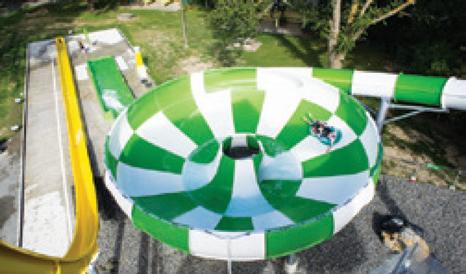

Are you at risk of melanoma?
Did you know that New Zealand has the highest rate of melanoma in the world? Every day, around 7 New Zealanders are diagnosed with melanoma - it’s the most serious form of skin cancer and it can quickly become deadly.1,2
That’s why MoleMap’s proven skin-mapping system is designed to detect skin cancers such as melanoma early – when it’s most treatable.3
We check. And double-check.
With MoleMap you get two sets of expert eyes examining any moles of concern: a trained Melanographer and an experienced specialist Dermatologist.
Fewer scars. Fewer scares.
Because MoleMap can more accurately identify melanoma, there is less need to surgically remove benign (harmless) moles.1
Early detection makes a difference.
Early melanoma detection offers a nearly 100% chance of survival within 5 years.? That’s why it’s always worth checking.
Clinics held weekly in Invercargill, Dunedin, Oamaru, Queenstown, Timaru, Ashburton and Rangiora
0800 665 362 | molemap.co.nz

References:
1. Health Promotion Agency and the Melanoma Network of New Zealand (MelNet) 2017: New Zealand Skin Cancer Primary Prevention and Early Detection Strategy 2017 to 2022.
2. https://www.melanoma.org.nz/facts-risk-factors
3. https://www.melanoma.org.nz/early-detection

Debunking home education misconceptions The freedom to learn
By Ben O’Connell
Home education, also known as homeschooling, is where parents and legal guardians take responsibility for their children’s education instead of enrolling them in a registered school.
And it’s more common than you think. Per the Ministry of Education, as of 1 November 2023, 11,072 Kiwi kids are home-schooled.
Parents need to thoroughly research and plan their approach to home education, says Sean Teddy, Hautū of Operations and Integration at the Ministry of Education.
“They must meet the legal requirements that their child will be taught the curriculum as regularly and as well as a registered school,” Sean says.
“Home-educating parents have the primary responsibility for monitoring the quality of their children’s education; a plan to track progress is detailed in the Home Education application.”
Several learning approaches are available to parents, who must also understand the difference between home education and Te Aho o Te Kura Pounamu –Correspondence School, which is distance learning that follows the national curriculum.
Some common curricula and approaches include Accelerated Christian Education, Montessori, Charlotte Mason, and Waldorf.
Home educators might also access programs used by schools like Reading Eggs, Mathletics, and Maths Whizz.
Principal of Homeschooling New Zealand, Todd Houghton, says there are two main homeschool pathways:
“Children and teens are also able to watch the many adults in a home education group engage in friendly interactions with one another, thus modelling positive relationships.”
- Nadia Sole
teaching your children until age 16 and then enrolling with Te Kura for NCEA, or taking an alternative qualification route.
“There are a number of alternatives to NCEA available – Cambridge, Steiner, ACE or ourselves, CENZ. Each alternative route can give you entrance to a New Zealand university at a standard no less than NCEA Level 3,” Todd says.
Caregivers choose homeschooling for many reasons.
The three main reasons Todd hears are “the appallingly low standard of academics in New Zealand schools, socialisation issues, and the social engineering agenda being foisted upon children.”
The National Council of Home Educators New Zealand surveys the homeschooling community annually. Coordinator Nadia Sole says the top three reasons for home education per the survey are family, access to a higher quality education tailored to their child, and lifestyle.
32 | Term 2, 2024
“They must meet the legal requirements that their child will be taught the curriculum as regularly and as well as a registered school.”
- Sean Teddy Hautū of Operations and Integration at the Ministry of Education.

“In 2022, the option “schooling system: avoid bullying, mistreatment, negative peer pressure” made the top three for the first time since we started surveying our community ten years ago,” Nadia says.
The biggest homeschooling misconception is socialisation. Nadia wishes it was debunked. She says that for many families, the challenge is finding quiet time at home because there are so many opportunities for activities and experiences in the community.
“In school, most children interact with just a few select adults each week,” Nadia says.
“These adults are always in positions of authority over the kids, and the interactions are largely of an instructional nature. In home-educating communities, children and adults interact on a more casual level.
“Children and teens are also able to watch the many adults in a home education group engage in friendly interactions with one another, thus modelling positive relationships.”
Nadia also refers to the Ministry of Education’s 2015 Homeschooling Review, which acknowledges that “the research also indicates that homeschooled children tend to be well socialised”.

Todd agrees and says the constant question of socialisation incorrectly assumes the only way to prepare children for society is in large age-banded groups.
“When people ask me, “Aren’t you worried about socialisation,” my answer is, “Yes, why do you think so many of us are homeschooling?”
Homeschooling has challenges, such as financial issues, battling negative perceptions, and adapting to the lifestyle’s demands.
The Ministry of Education says the need to plan and deliver an education programme as regularly and as well as a registered school is
highly demanding, especially when home-schooling multiple children.
“Exemptions from attending a registered school can be granted from 6 years old until the student is 16 or enrols in a school,” Sean says.
“Children are statistically more likely to leave home education as they enter their secondary school years.
“In some circumstances, the Ministry of Education may contact parents about their practice, or if there are concerns, may request that the Education Review Office conduct a review of a home educator.
If ERO and the Ministry are not satisfied that concerns raised can be addressed, their Certificate of Exemption can be revoked.”
Homeschooling has many benefits and is here to stay. Drawn by the freedom to tailor learning experiences to individual needs, escape socialisation concerns, and pursue alternative qualification routes, an increasing number of caregivers are choosing to homeschool.
The journey may not be without hurdles, but as the homeschooling community continues to grow, it proves that a love for learning can thrive beyond school grounds.
Term 2, 2024 | 33 News | Home Education
Speaking volumes
Teaching public speaking in new ways
By Ben O’Connell

Also known as glossophobia, public speaking is one of the most common fears worldwide. It’s an essential life skill, but why is it so dreaded? Is public speaking taught in a way that instils fear?
Anxiety New Zealand
Psychologist James EvansMcleod for Anxiety New Zealand says in terms of evidencebased treatment, cognitive behavioural therapy (CBT)
is the most effective treatment for anxiety around public speaking.
“CBT focuses on the connections between thoughts, physiological sensations, and behaviour, and would include an ‘exposure hierarchy’, a list of low to high anxiety-inducing situations the individual confronts in a structured and controlled manner,” James says.
The typical English class might give each student just one opportunity to perform in front of a sizeable audience.
A student with an exposure hierarchy approach wouldn’t be subjected to that nightmare; qualities like audience size and topic depth would grow until the desired goal is achieved.
James says an exposure hierarchy has multifaceted effects.
“The student can find anticipated concerns (the ‘what ifs?’) don’t quite happen as predicted, are manageable if they do, or can be problem-solved.
“Physical symptoms can be regulated through ‘habituation’, where stress responses reduce
in length and severity due to repeated stressor exposure, allowing the student to perform in a more relaxed state.
“Finally, as steps on the hierarchy are rehearsed or positively challenged, the individual becomes more confident in their ability to perform and manage their anxiety.
“This individual has had numerous positive learning experiences with public speaking they carry forward, compared to the other who has minimal exposure and continues to experience public speaking as adverse.
34 | Term 2, 2024
“CBT focuses on the connections between thoughts, physiological sensations, and behaviour, and would include an ‘exposure hierarchy’, a list of low to high anxietyinducing situations the individual confronts in a structured and controlled manner.”
“In discussions with parents, I often use the analogy of diving boards. Going straight to the top and looking down will invite a strong physical reaction, where the individual will have concerns about harm if they were to jump and likely retreat down the ladder with a sense of relief which ‘reinforces’ the avoidance behaviour. Contrast this to starting at lower heights, where the individuals adapt to each increased height towards the top.”
CBT invites students to explore their anxiety, like what is making them nervous and the consequences of a less-thanperfect performance.
James says students may discover they’ve overestimated their concerns or find further personal meaning in their experience.
“It is worth noting there are numerous evidence-based therapy approaches to anxiety and public speaking. However, CBT is often seen as the ‘gold standard’ for such a presentation,” he says.
The CBT approach concludes with setting goals and learning muscle and breathing exercises.
Speech New Zealand
Speech New Zealand’s vision is to develop confident, articulate New Zealand voices through relevant, future-focused strategies that will empower and strengthen communities. Their philosophy is to empower students to feel confident in what they do. Student progress is celebrated at every level.
Speech NZ says the best way to build confidence is with small steps. “We usually teach in
groups, and students become focused on enjoying activities with their peers. They are often having so much fun that they don’t realise they are speaking in front of others.
“Teachers will share techniques to help with relaxation, breathing and focus, and many students will use these tools to help their well-being in everyday life.
“All speakers experience a level of nervousness, but practicing with teachers builds student confidence. Act confident, and the audience will respond.
“Speech NZ focuses on different variations of public speaking, including reading aloud, presenting a talk, a story/poem or devised/scripted drama.
“This variation allows students to start where they feel most confident and develop the skills through each grade.”
Teaching students to use heading prompts gives them time to continue if they stumble. “Extempore speaking, the ability to communicate in a natural conversational manner, is a major focus for our public speaking students.
“Students are asked not to memorise their talks or read from cue cards and to speak about topics they are involved in or passionate about.
“With the use of bullet points, PowerPoint, flip charts or props, a student is prompted to each talking point in a natural way whereby they can connect with the audience authentically and through creative expression.”
Speech NZ has a range of syllabi, including an English Language Learners Syllabus aimed at those for whom


English is another language and a Professional Speaking syllabus aimed at adults wanting to gain confidence to excel in their profession and has been successfully adapted for migrant communities throughout Aotearoa.
“Our Oral Communication and Language Literacy Syllabus | Aromatawai-ā-waha Marautanga is crafted to align with Te Matāiaho | The Curriculum Refresh to empower students to acknowledge their whakapapa through storytelling, use language to share information
and ideas and relate to others through active listening and reflective discussion.
These skills start with telling us about an experience or sharing ideas about something you’ve recently enjoyed, progressing to a talk to persuade or sharing a presentation based on a place of local significance.”
Thanks to psychologist James Evans-Mcleod for Anxiety New Zealand, Speech New Zealand Chair Pauline Prendergast, ViceChair Karen Austin, and Executive Manager Helena Coulton for contributing to this article.
Term 2, 2024 | 35 News | Life Skills



Top quality, NZ made products, designed to be safe, easy to handle and store and guaranteed to perform every time.
Proudly installed in many schools & universities and performance venues throughout New Zealand.
NZ suppliers and distributors of
THE STAGE IS SET! Hires or Sales - One call can do it all www.stronglite.co.nz SALES: 0800 78 78 99 HIRES : 0800 12 12 33
Stage sections
Portable grandstands 4 Choir, orchestra & audience risers 4 Kapa haka stages 4 Drapes 4 Steps 4 Lecterns 4 Trolleys 4 Ramps & ballet barres
4
4
SERVICES
Code literacy Transforming the curriculum for the digital age
By Paige O’Brien
In an era where technology is becoming more evident in every aspect of our lives, the call for coding to be an integral part of the high school curriculum has never been more evident. As we stand on the cusp of a digital future, the need to equip the next generation with the tools to not only navigate but also innovate within this landscape is critical.
Bridging the digital divide
At the heart of the argument for teaching coding in schools is the mission to bridge the digital divide. As digital literacy becomes as fundamental as reading, writing, and arithmetic, coding instruction in schools ensures that all students, regardless of background, have equal opportunities to acquire these essential skills.
This inclusivity fosters a generation of digital natives who are adept at understanding and manipulating the language of computers.
Cultivating critical thinking and problem-solving skills
Coding is much more than the mechanical act of writing computer programs; it is a powerful tool for cultivating critical thinking and problemsolving skills.
Through coding, students learn to break down complex problems into manageable parts, think logically, and devise creative solutions.
These skills are universally applicable, transcending the boundaries of computer science and enriching students’ capabilities in virtually every field of study and future career paths.
Preparing for the future job market
The job market is evolving at an unprecedented pace, with

a significant shift towards technology-driven roles.
By integrating coding into the curriculum, schools are preparing students for the future job market, where proficiency in programming and understanding of digital technologies are not just advantageous but often required. This preparation is crucial for ensuring that students are not only consumers of technology but also creators, ready to contribute to and shape the future economy.
Encouraging creativity and innovation
Coding is an expressive medium, akin to art or music, that encourages creativity and innovation. Through coding, students can bring their ideas to life, whether it’s developing an app, designing a video game, or creating a website.
This creative process not only ignites a passion for learning but also empowers students to become innovators and inventors, capable of conceptualising and developing solutions to real-world problems,
Enhancing collaboration and communication
Coding projects often require collaboration, bringing students together to work towards a common goal.
This collaborative process fosters teamwork, communication, and interpersonal skills as students learn to articulate their ideas, give and receive feedback, and navigate the complexities of working in diverse teams.
These are invaluable life skills that prepare students for success in both their personal and professional lives.
Integration
The integration of coding into the high school curriculum is not just a nod to the importance of technology in our lives; it is a necessary step towards preparing students for an inherently digital future.
Coding education fosters digital literacy, critical thinking, creativity, and collaboration, which can lead to innovation. As we look towards the future, it is clear that coding should be an essential component of education, unlocking endless possibilities for the next generation to explore, create, and lead in the digital era.

Term 2, 2024 | 37 News | Computer Coding
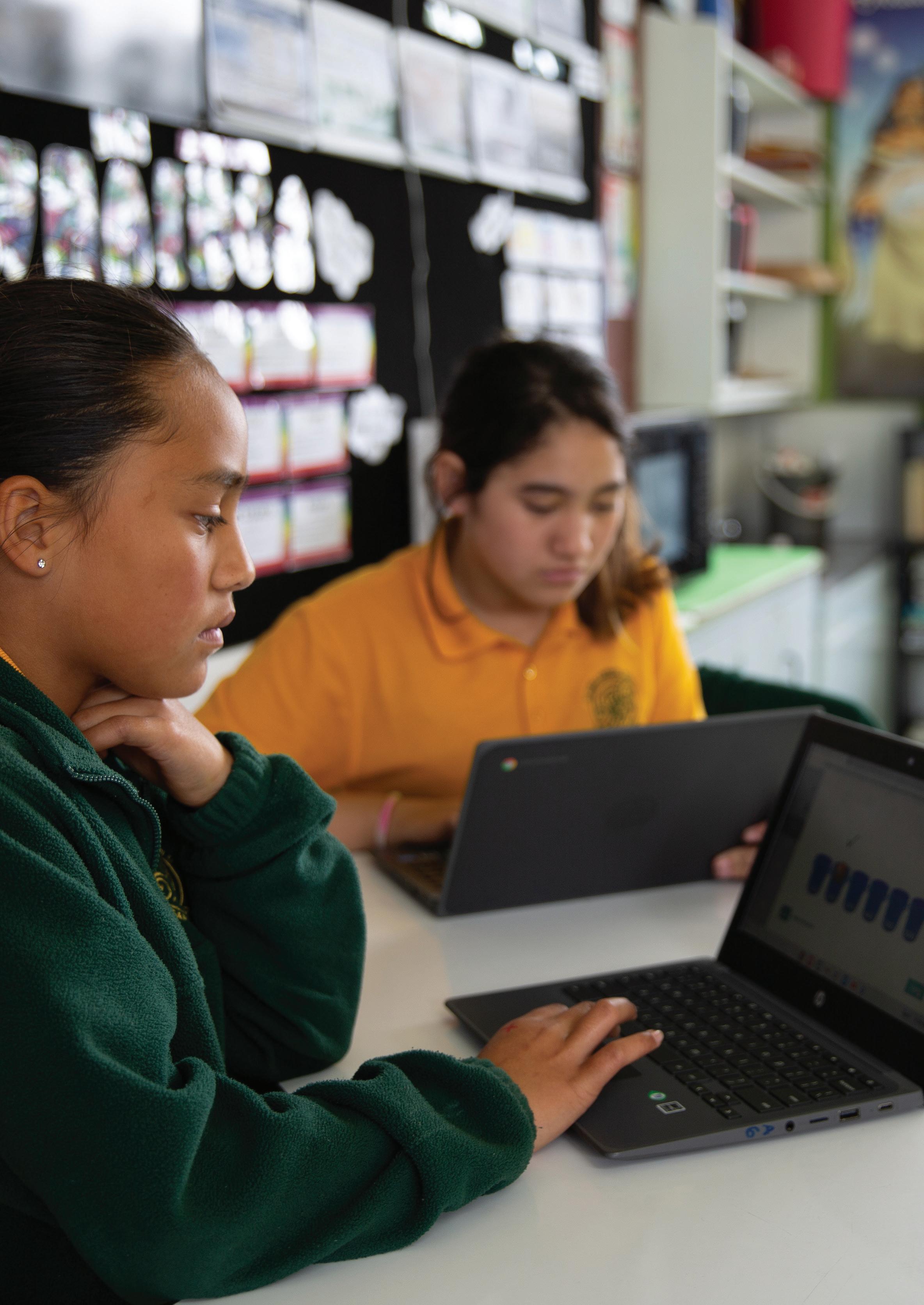
Understanding online safety and security
A safe digital space isn’t necessarily secure, and a secure one isn’t always safe. The terms ‘online safety’ and ‘online security’ are often used interchangeably – and although closely related, there are key differences.
38 | Term 2, 2024

Knowing the right online safety and security principles is crucial for kura and schools. The two concepts have to work in tandem to ensure your ākonga have safer, more positive experiences online.
However, keeping schools and kura safer online remains a team effort, and we all have a role to play.
Safety vs security
In broad terms, online safety is ‘protecting people and ensuring good digital citizenship in online spaces’, while online security is about ‘protecting digital systems and data including personally identifiable information’.
Good online safety involves educating users on the best online behaviours, such as how to identify harmful content before clicking on it, not sharing personal information, and responsible handling of sensitive data.
Training kaiako and ākonga to spot the signs of scams, cyberbullying and misinformation,and knowing what to do, also creates a safer online environment for your school.
Good online security is about ensuring your devices and networks have robust technical solutions to help protect against malicious attacks – such as malware, ransomware, phishing attacks, DDoS attacks and other threats.
This means things like a strong firewall, email protection and antivirus software. It’s also about having solid governance, structures and processes in place to ensure good information management, two-factor authentication (2FA), and strong password policies.
While they’re different, safety and security are intertwined. When you set ākonga up with the skills to navigate online spaces as safely as possible, you’re also protecting your networks.
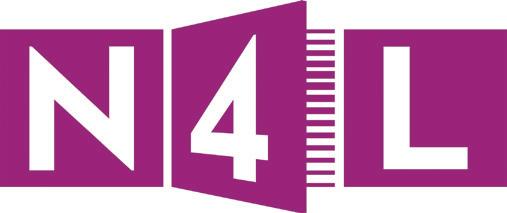
For example, they’ll be less likely to click on an unsafe link or open a phishing email if they’ve been informed about the risks.
Similarly, enhancing security makes it less likely your people will be accidentally exposed to harmful content.
Tips on safety
To minimise risks for ākonga online, it’s important to put tech safeguards in place to support better online safety. This can involve your school working with Network for Learning (N4L) to block and filter inappropriate content.
Protecting systems with security measures
There’s no single tool that can cover every potential online threat, but there are measures that can help make your school’s network more secure:
• Ensuring your kaiako and ākonga are using unique, strong passwords and 2FA for online accounts such as email
• Keeping software and operating systems up to date across school devices
• Creating a practical cybersecurity policy that can be shared with kaiako and ākonga
• Reducing the risk of threats by having N4L’s Safe & Secure Internet recommended settings as a baseline level of protection
• Minimising spam and phishing attempts with N4L’s Email Protection solution, which is fully funded.
CERT NZ, Netsafe and the Ministry of Education are also here to help your school, while N4L’s Security Operations Centre helps to protect schools and kura, and mitigate harm from major cyber security vulnerabilities and incidents.
Further information
If you need more information, go to: www.n4l.co.nz or www.education.govt.nz/cybersecurity.

Term 2, 2024 | 39 News | Technology
Empowering educators: Instant Education Solutions
Empowering educators: Instant Education Solutions Instant Education Solutions Ltd (Instant) has been the leading supplier of assessment and teaching resources to secondary schools and tertiary providers in Aotearoa New Zealand for over 20 years.
Our team of resource developers and subject matter experts have been carefully selected to ensure the content you receive is current, valid, consistent, and reliable.
Our mission is ‘Changing lives through learning’ – we exist to help educators and learners achieve their goals.
Instant’s assessment and teaching resources
Instant offers resource delivery packs to save you time and money. Each delivery pack includes:*
• Teacher’s Guide
• Learner’s Guide
• Assessment
• Assessment schedule
• Sample answers.
Comprehensive learning content that fully covers the unit standard/achievement standard and prepares learners well for their assessment. Includes editable PDFs for a selection of domains/subjects.
We offer a 12-month free upgrade if there is a version change after purchase. We also


• Printable resources designed & collated by two specialist Literacy Teachers - ‘Reading Rockets’ & ‘Blast Off’s’.
• Teacher Planners provided for Explicit Teaching for 5-12yr olds, that sit alongside our Student Learning criteria.
• Explicit Learning Intentions for students to measure their own success & recognise their Next Learning Steps
• Variety of Additional Resources (tests, games, practice & extension activities) to print & use by Teachers, Students & Parents to achieve in Literacy.
• Measures in Reading against Curriculum Expectations; Literacy Progressions and other explicit Teaching tools.
• Training Kits - Power Points and Handouts to provide training for Teacher aides, Ears for Reading (Volunteers listening to Readers) , Tuakana Teina (Peer Support) & more.









provide a 24 month free internal upgrade service.**
Moderation guarantee
All our unit standard assessment resources are pre-moderated by the relevant standard setting bodies, to ensure validity against the NZQA or WDC standard.
Instant guarantees that if any assessment materials for Delivery Packages fail external moderation, we will modify and replace the Delivery Package free of charge.**
NEW instant online
Paperwork and printing can be reduced significantly by using our online learning platform, Instant Online. Choose from a wide range of unit standards.
For learners:
• Interactive courses
• Engaging learning content
• Fillable PDF assessments
• ‘How To’ Guide.
For teachers:
• Student progress tracking
• Download student assessments
• Assessment sample answers
• ‘How To’ Guide
• Email support.
Visit instantonline.nz to check out our demo.
Instant’s assessment marking service
Several unit standards are available for assessment marking by Instant, including
Early Childhood Education (ECE)
and Legal Studies. This is particularly useful where teachers are overloaded with marking or for schools that may not have accreditation in a particular NZQA sub field or domain but still wish to teach certain subject areas. You can teach these subjects using our pre-moderated resources, then send your assessments to Instant to be assessed for you. Your school can then register those credits on your students’ Records of Learning, using our provider number. Reducing time and costs of compliance or accreditation, Instant frees you up to do what you do best.
Assessments are marked promptly, typically within two to three weeks, ensuring a seamless and efficient process for educators.
Licensing options for secondary schools
Standard Licence for area and secondary schools – Delivery Packages are purchased or upgraded individually as needed.
Annual Licence – access an agreed number of delivery packages per year (from our full range of resources) at a reduced cost.
*Assessment Only Packs don’t include Teacher’s/Learner’s Guides.
**Further conditions apply, for more details, see our terms and conditions on our website: www.instant.org.nz/ overview/terms-and-conditions.
Contact Julia, our key account manager, to learn how Instant can help your school today.
40 | Term 2, 2024 Working Space | Teacher Resources
Teachers: Save Time; the Resources are all built for you supernovareadingresources@gmail.com www.supernovareadingresources.com
No Time To Create Your O wn Resources?
Instant Education Solutions devel ops high-quality educational resources and assessments that are:
• pre-moderated available in print, e-pdf or online
• include all required theory, activities and answer guides,
• align to graduate pro les for NZQA quali cations meet the criteria for unit standards


No Time To Mark?
N o Consent To Mark?
Instant Education Solutions provides an assessment marking service for many of our unit standard resources.



Check out our catalogue online: www.instant.org.nz

Changing lives through learning


Fuel your teaching: resources for educators and teachers
When it comes to teaching and influencing the next generation, teachers here in New Zealand are fortunate enough to have access to a variety of top-notch teaching resources. These resources not only support the curriculum but also enhance teaching practices, making learning more engaging and impactful for our tamariki while also saving teachers time.
Tahurangi: a digital hub for curriculum content www.tahurangi.education.govt.nz
Tahurangi is a noteworthy addition to education resources in New Zealand. Launched as a digital home for curriculum content, teaching resources, and educational news, Tahurangi is designed to simplify the search for high-quality teaching materials.
The platform supports a wide range of curricular areas, including the New Zealand Curriculum, Te Marautanga o Aotearoa, Te Whariki, and more.
With features like bilingual search functions, various search features, and the ability to download resources from the website directly, Tahurangi is a great tool for educators and teachers looking to enhance their lesson plans.
Essential Resources: a treasure trove for educators and teachers www.essentialresources.co.nz
Essential Resources stands out as a leading provider of educational materials in New Zealand.
Catering to primary, secondary and tertiary education, it offers an extensive collection of resources covering subjects such as English, Maths, Science and the Arts.
Beyond subject-specific materials, Essential Resources
also focuses on professional development for teachers, with courses on teaching writing, spelling, grammar and more.
This platform is praised for its role in supporting best-practice teaching and learning for teachers, both inside and outside of the classroom.
Twinkl NZ: power up your lessons www.twinkl.co.nz
Twinkl is specifically designed for educators and offers a treasure trove of downloadable teaching materials aligned with the New Zealand curriculum.
From ready-made lesson plans and interactive activities to assessments and classroom decor, Twink boasts a wide variety of resources to help engage students and save teachers time.
With a ‘freemium’ model, teachers and educators can access a range of free materials or upgrade for a wider selection, making Twinkl a valuable resource for Kiwi teachers
seeking to enhance their lessons and support student learning.
Services to Schools from the National Library of New Zealand www.natlib.govt.nz/schools
The National Library of New Zealand offers an abundance of teaching and learning resources through its Services to Schools program.
This initiative provides educators with free access to a vast lineup of online resources, including curriculum guides, student work aids, and research tools.
The program emphasises the use of primary sources collected and preserved by the National Library, offering a unique opportunity for students to engage with historical and cultural materials directly.
These resources are ideal for creating new, research-based works and for integrating a deeper historical and cultural understanding into the learning process.

The home of smart teaching MATHS ASSOCIATES





INSPIRE EMPOWER EDUCATE Let’s work together to fill up your kete RAPLD and TAMOE Accredited www.mathassociates.co.nz Structured Mastery Approach CPAL Concrete Pictorial Abstract Language Working with others to build understanding Active mathsbring it alive! Working Space | Teacher Resources

UNISPHERE SOLUTIONS
EMPOWERING SCHOOLS WITH CYBER SECURITY
In the digital age, cyber security is no longer a luxury, but a necessity. As leaders of educational institutions, it’s crucial to understand the impact of cyber security on your school and the importance of upskilling students to follow good practices in cyber safety and security.

The Cyber Threat Landscape
Cyber threats are evolving, and schools are not immune. From data breaches to ransomware attacks, the consequences can be devastating - disrupting learning, compromising student and staff data, and damaging your school’s reputation.
Minimum Viable Protection (MVP)
To combat these threats, we introduce the concept of Minimum Viable Protection (MVP). MVP is a complete assessment that seeks to lift organizations to achieve a minimum defensible cyber posture, unique to their requirements. It’s about implementing the right measures that provide maximum protection with minimum resources. But cyber security isn’t just about systems and technology. It’s also about people. Educating students about cyber safety is a vital part of creating a secure digital environment. By teaching them the principles of good cyber hygiene, we empower them to be the first line of defense against cyber threats.
The Role of Education
WE INVITE YOU TO BOOK A FREE EVALUATION OF YOUR SCHOOL’S CYBER SECURITY POSTURE.
This is an opportunity to identify potential vulnerabilities and take proactive steps to enhance your school’s cyber resilience.

Cyber security is a shared responsibility. By embracing MVP and prioritizing cyber education, we can create a safer digital future for our students. Let’s work together to make our schools cyber safe.
To book your free evaluation, please visit our website at www.unisphere.co.nz | info@unisphere.co.nz
Beyond academics
Supporting student mental health in the classroom

A 2018 survey from the Ministry of Health revealed that most of our tamariki aged 3 to 14 years are developing well without major social, emotional and behavioural problems.
Saying that, in 2021/2022, nearly one in four (23.6 percent) of young people ages 15 to 24 years old reported experiencing high or very high levels of psychological distress, which was up 11 percent from 2020.
According to the Mental Health Foundation’s website, schools are currently dealing with an increase in mental health issues.
In 2021, 82 percent of teachers agreed or strongly agreed that mental health issues are occurring more often within their students than two to three years ago. Schools play a vital role in students’ lives, and their well-being extends beyond academic performance.
Educators, including principals and teachers, are often on the front lines of identifying and
supporting students struggling with mental health challenges. Here is how educators can make a positive impact and help change a struggling kid’s mindset.
Building awareness and understanding
Educate Yourself: Knowledge is power. Familiarise yourself with common mental health conditions within adolescents, such as anxiety, depression, and eating disorders.
Learn about the warning signs, which can manifest as changes in behaviour, mood, academic performance, or participation in class discussions. Understanding these conditions equips you to identify potential issues and approach students with empathy.
Open communication: Mental health conversations should not be shrouded in secrecy. Normalise discussions about mental well-being in the classroom.
Dedicate time to classroom activities that encourage students to reflect on their emotions and identify healthy coping mechanisms. Discuss the
importance of seeking help for mental health concerns, just as they would for a physical injury or illness.
Invite guest speakers like school counsellors or mental health professionals to address the students and answer questions in a safe space.
Fostering a safe and inclusive environment
Positive climate: A classroom environment built on respect, empathy, and kindness is the foundation for student wellbeing. Celebrate diversity and encourage students to support each other. Implement cooperative learning activities that foster teamwork and build social connections.
Active listening: Be approachable and show genuine interest in your students’ well-being. Make eye contact, offer a listening ear, and avoid judgement. Sometimes, simply being someone students feel comfortable talking to can make a world of difference.
Celebrate strengths: Focus on students’ strengths and celebrate their
accomplishments, both big and small. Positive reinforcement can boost self-esteem and create a sense of belonging.
Early intervention and support
Observe and identify: Be aware of changes in behaviour, mood or academic performance that might indicate a student is struggling. This could include social withdrawal, difficulty concentrating, excessive absences, changes in sleep or eating patterns, or outbursts of anger or sadness.
Know your resources: Familiarise yourself with the school counsellor, social worker, or mental health professionals available on the school grounds. Learn about the referral process and the support services they provide, as well as the resources available.
Connect and refer: Encourage students to seek help from the school counsellor or suggest trusted resources outside of school, such as mental health hotlines or support groups.
44 | Term 2, 2024 Working Space | Student Counselling

Partner with parents/guardians to ensure students get the support they need. Remember, you are not expected to be a mental health professional, but you can play a crucial role in connecting with the appropriate resources.
Promoting overall wellness
Social-emotional learning: Integrate social-emotion learning activities into the curriculum. Teach students coping mechanisms, stress management skills, and healthy communication techniques. These skills empower students to navigate challenges, build resilience, and develop positive relationships.
Mindfulness practices: Introduce simple mindfulness exercises like breathing techniques or meditation to help students manage stress and anxiety. Encourage them to focus on the present moment and identify their emotions healthily/
Healthy Habits: Promote healthy sleep patterns, a balanced diet, and regular physical activity, all of which are crucial for mental wellbeing. Encourage students to participate in physical education classes, join school sports teams, or find extracurricular activities they enjoy.
Role modeling: Educators play a significant role in setting the tone for the school environment. By demonstrating self-care practices like taking breaks, managing stress, and maintaining a healthy work-life balance, you can model positive behaviours for your students.
Educators and teachers are not expected to solve students’ mental health problems alone. But, creating a supportive environment, building trust, and knowing when and where to refer students can play a critical role in helping them navigate challenges, prioritise their mental health, and ultimately reach their full potential.


Working Space | Student Counselling
DIGITAL SAFETY AND WELLBEING BEYOND THE CELLPHONE BAN 90-minute online PD workshops, designed for school teams and Kāhui Ako Develop a culture of citizenship and safety around digital technologies and engagement online. While cellphones may no longer be as visible at school, we know there’s more to developing a culture of digital safety and wellbeing at kura that supports students’ learning and social/emotional development. For more information visit: lifeeducation.org.nz/teacher_PD Or email: webinar@lifeeducation.org.nz Group cost: $1,800+gst These dynamic professional development workshops are delivered online with live facilitation from Anjie Webster, an MoE Accredited Facilitator. Anjie has extensive experience in education and worked as an Education Advisor for Netsafe before founding Generation Online.
Playground safety
A comprehensive approach to protecting school children
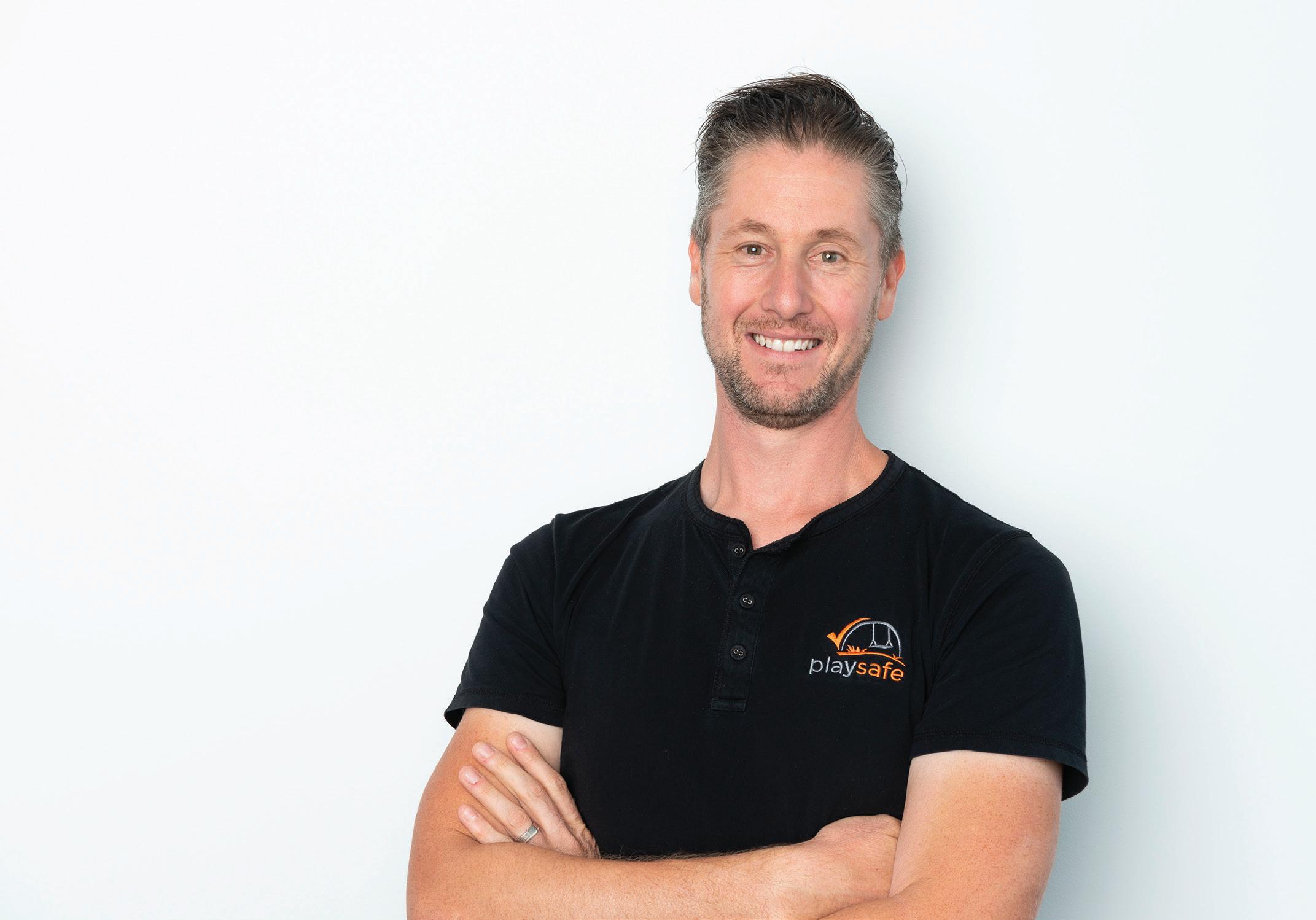
Ensuring the safety of school playgrounds is not just a matter of responsibility; it’s a profound commitment to the well-being of children.
This responsibility encompasses a multi-faceted approach that combines risk management, liability mitigation, and strict adherence to safety standards. With children’s safety at the forefront, it becomes imperative for schools to uphold rigorous safety protocols.
At the core of safeguarding school playgrounds lies a thorough understanding of risk.
The concept of risk within this context extends to the potential for accidents or injuries during play activities. From minor scrapes to more severe incidents such as falls from equipment, the spectrum of risks is wide-ranging.
Recognising and mitigating these risks is paramount to maintaining a safe environment where children can thrive and play without fear of harm.
Another critical aspect that cannot be overlooked is liability. School principals and Boards of Trustees (BOTs) bear the responsibility of ensuring students’ safety on school grounds, carrying both legal and financial implications.
Failing to meet this duty of care can result in severe consequences. Compliance with standards such as the NZS5828 is not just advisable; it’s essential.
These standards outline protocols for the design, installation, and upkeep of playground equipment and surfacing, serving as a blueprint for creating secure environments for children.
One crucial step in ensuring compliance and accountability is the independent verification of new playground installations.
This verification process, separate and independent from suppliers, ensures that schools receive what they paid for and establishes a baseline for addressing any warranty issues.
Playsafe conducts these verifications, known as
post-install audits, to uphold safety standards and ensure compliance.
Moreover, consistent annual inspections and maintenance, as mandated by NZS5828, are vital for promptly identifying and rectifying hazards.
Proactive measures such as proper supervision, signage, and safety surfacing are indispensable components of effective risk management strategies.
In conclusion, the endeavour to safeguard school playgrounds demands a holistic approach.
By prioritising student well-being and adhering to established protocols, schools can create environments conducive to safe and enjoyable play experiences.
Playsafe is dedicated to supporting schools in this endeavour, working closely with the Ministry of Education to facilitate compliance processes.
Through thorough inspections, risk assessments, and surface impact testing, we contribute to cultivating safer and more enjoyable play environments for children nationwide.
Together, let’s ensure that every child can play freely and safely.
Adam Stride
– founder and director
Adam Stride is the founder and director of Playsafe and has over two decades of expertise in the playground industry as a former managing director of a leading NZ playground manufacturing company.
With a strong background in design, compliance, manufacturing, construction, and project management, Adam is widely considered to be one of the most knowledgeable professionals in the industry when it comes to playground maintenance and compliance matters.
He is a certified RPII Level 3 Outdoor Play Inspector and the only accredited RPII Level 4 Indoor Enclosed Play Inspector in New Zealand.
Adam is also an expert in conducting surface impact tests on various types of impact-absorbing playground surfaces, which is one of his specialties.
46 | Term 2, 2024 Educational Playgrounds | PlaySafe
Adam Stride, Principal Safety Inspector, Playsafe.
School Playground
Get in touch with NZ’s largest certified leading safety, inspection and compliance agency, working closely with the Ministry of Education to ensure School Playgrounds are Playsafe! Compliance 3
POST-INSTALL CHECK
Ensure accountability by having a Post-installation audit for new play projects This should be independent of the supplier to confirm that you ' ve received what was promised and avoid discovering issues down the line
ANNUAL SAFETY CHECK
Regular certified L3 annual inspection, is essential for identifying and addressing hazards, while also serving as a formal certified record of inspection for Board of Trustees' due diligence in case of injury.

SURFACE IMPACT TEST
Conducting a 2-yearly impact test on synthetic surfaces ensures that any deterioration in impact performance or quality issues are promptly identified within the warranty period.
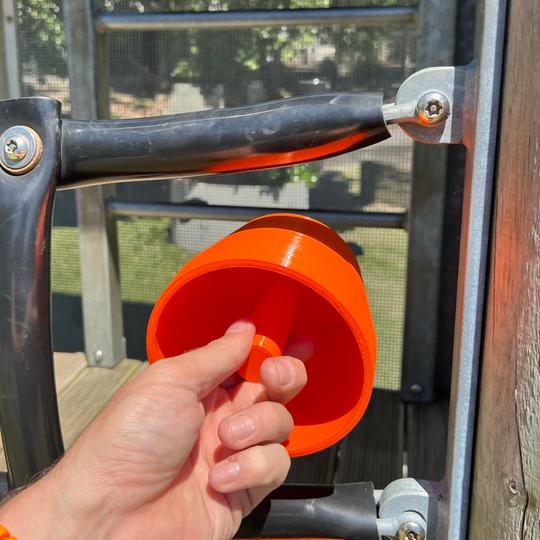


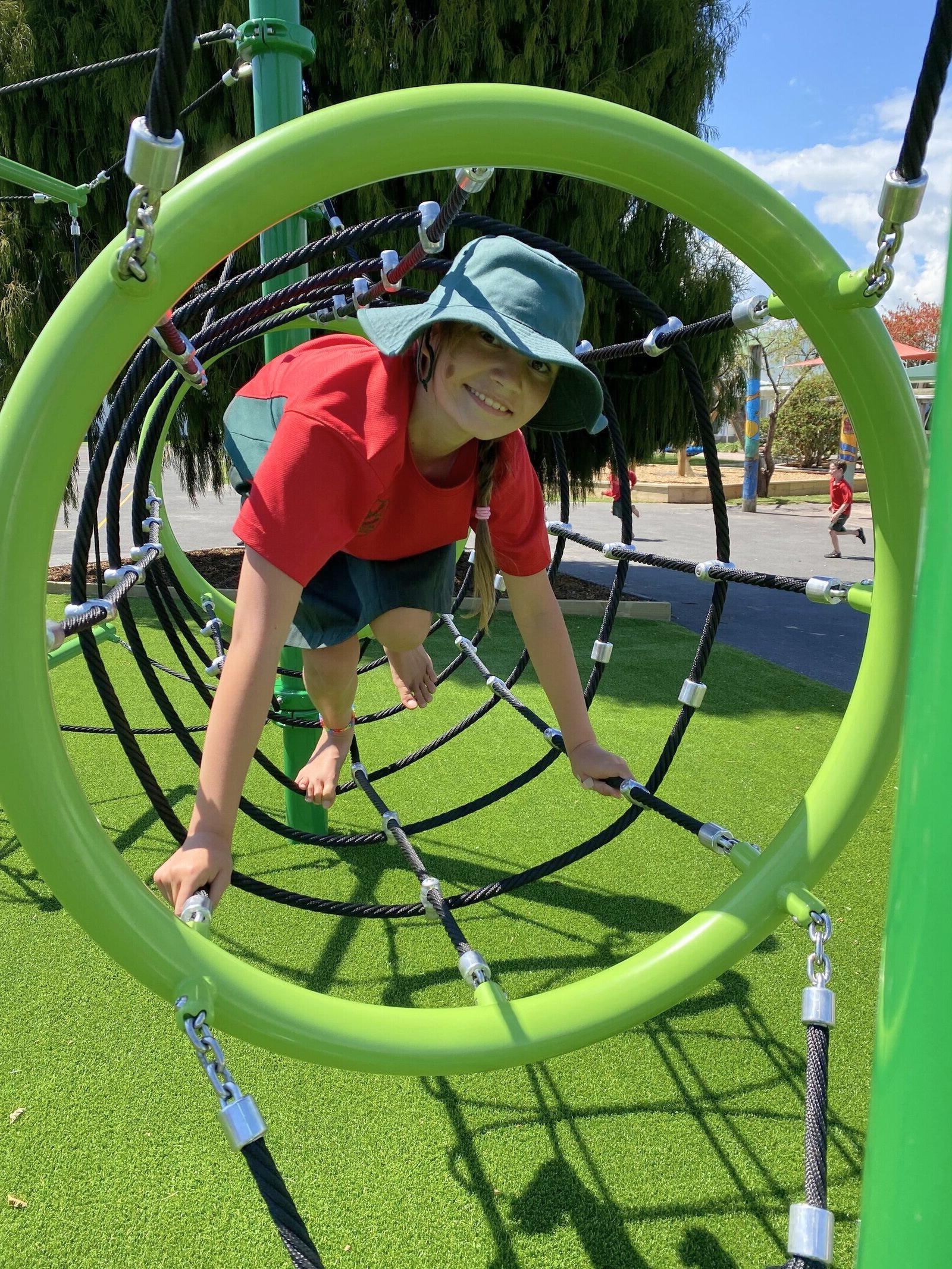
F o r i n d e p e n d e n t v e r i f i c a t i o n o f y o u r n e w , r e c e n t o r o l d e r P l a y g r o u n d .

Key Checks!
w w w . p l a y s a f e . c o . n z i n f o @ p l a y s a f e . c o . n z
For Long-Term Peace of Mind
Ensuring playground safety
Playground injuries are the leading cause of injury to children ages five to 14 in schools and lack of supervision is associated with 40 percent of playground injuries.


A study found that children play without adult supervision more often on school playgrounds (32 percent of the time), than playgrounds in parks (22 percent of the time).
Approximately 58 percent of playground injuries requiring medical attention occur in schools and are most common among 5-9 year-old girls and 10-14 year-old boys. The most common injury times occur between 12pm - 4pm.
The most common causes of medical attention from playgrounds is injury suffered from falling. Approximately 70 percent of playground equipment-related injuries involve falls to the surface, and 10 percent involve falls onto equipment - either due to inadequate surfacing or onto hard objects.
The most common injury is long-bone fractures (arms and legs) which are most common from upper-body overhead activities such as
monkey bars, monorails etc. This is generally due to the height of the bars and the quality of the surface below.
Protective surfacing under and around playground equipment can reduce the severity of, and even prevent, playground fall-related injuries. The risk of injury in a fall onto a non-impact absorbing surface such as asphalt or concrete is more than twice that of falling onto an impactabsorbing surface.
Much emphasis and effort is being placed on increasing physical activity among children as it promotes good health and prevents obesity. Play is also important in the development of social behaviour, enabling children to interact with their peers.
However, with this increase in physical activity and play, there is also an increase in the risk of injury. It is therefore necessary to ensure that safety measures are taken to prevent these injuries.
Continued on Page 54 >



Educational Playgrounds | Playground Safety We specialize in designing and constructing playgrounds using naturally created materials. Our vision is to create a space that brings children and nature together by learning through play. James 021 131 7937 Ellen-Mary 022 152 4044 natureplayscapes.co.nz


At HotShot Sports, we are a proudly NZ owned and operated company that provides high-quality gear for a wide range of sporting needs. We believe that life is too short to be using substandard gear; that’s why we make sports equipment built to last.









Soccer Volleyball Combination Sport Rugby Posts Basketball Tennis Hockey Outdoor Gym Equipment Netball
SupplYing Quality NZ Made Sports Gear
0800 483 6647 sales@hotshot-sports.com www.hotshot-sports.com

The following are eight effective injury reduction prevention measures for your school.
Eight effective playground injury prevention measures:
1. Equipment - purchase age and demographic appropriate play equipment.
2. Fall height - ensuring correct play equipment heights (fall height of max 3m for climbers and 2.2m max handle height for upper-body overhead activities).
3. Surfacing - use an impact‐absorbing (attenuating) safety surfacing such as certified loose fill (bark or woodchip) or synthetic surfaces (rubber matting).
4. Supervision – establish and maintain daily supervision procedures.
5. Daily inspection – daily/ weekly inspection by a school property manager (checklist template example can be found on our website).
6. Yearly inspection - annual comprehensive safety inspection/compliance audit by RPII Level 3 Play Inspector.
7. Surface test - Head Impact Surface (HIC) test every two years for synthetic surfaces (rubber matting only) - not required for loose-fill.
8. Maintenance –regular preventative maintenance, usually following comprehensive yearly inspection.








Educational Playgrounds | Playground Safety Playground Safety Surfacing High quality low maintenance safety surfacing customized to suit your environment. Making safety fun – let’s talk. Phone. 0800 808 570 Email. sales@burgessmatting.co.nz www.burgessmatting.co.nz Playground Specialists
design, and construction management services to deliver your commercial playground to plan and budget Phone. 0800 76 46 76 | Email. sales@playco.co.nz www.playco.co.nz
Planning,
Shotcrete

Shotcrete was invented in the USA in the early 1900s (where it is mainly known by its trademark name of Gunite). It is now commonly used in both residential and commercial industries. However, Shotcrete remains relatively new to Aotearoa primarily due to shortages in shotcrete specialists.
Retimix’s founder, Laurent Reti, is, however, the specialist you need to know. Laurent is one of the founders in introducing Shotcrete to Aotearoa. With Retimix now being a family business, Diaz Reti’s shotcrete skills now form part of our specialist shotcrete team.
What is Shotcrete?
Shotcrete is a mixture of aggregate and portland cement sprayed onto a surface using compressed air or hydraulic pressure. This propels the concrete through a hose and nozzle at high velocity, increasing the discharge pace and permitting a placement process, enabling an excellent bond with most substrates.

Can wet or dry concrete be used?
Wet or dry-mix concrete can be used. The wet-mix process fuses all the elements, including the water, together before entering the hose.
With dry-mix Shotcrete, water is added at the nozzle discharge.
Both support the concrete being carved, sculpted or trowelled almost immediately.


FREE CONSULTATION m 027 738 4649 k office@retimix.co.nz K www.retimix.co.nz
Top notch blasting
Totally Blasted is locally owned and operated in Tauranga, Bay of Plenty and services the greater Bay Of Plenty, Waikato and Auckland Regions. However, their state-of-the-art Multi Media Blast gear is 100 percent mobile, meaning they can travel nationwide.
They specialise in multi-media blasting, which includes garnet, soda, walnut shell and glass bead. Totally Blasted’s primary focus is specialised concrete finishes and is the area they excel in. Totally Blasted also carries out remedial works, removal of coating systems from various substrates and application of specialised coating systems from industrial and commercial to residential.
Managing Directors Roger Bryan and Gemma Trueman, along with the team at Totally Blasted, aim to bring you a well-oiled company to make your project as easy and stressfree as possible. Roger has 25plus years’ experience in the blasting and coatings industry. Working in the blasting industry, and for companies such as Dulux, has given him a unique understanding of different products and systems and how they can work to
benefit the task at hand in the best way possible. Gemma is the administrative brain behind the computer. With extensive knowledge on Business and Project Management, as well as feet on the ground experience, she knows all the ins and outs to have your project completed to your requirements with as little stress as possible.
Specialised Concrete Etching ‘the main bread and butter’.
Whether you want a wood look finish, acid wash finish, cultural designs, company logos, or any other unique stencilled etching carried out on your concrete, Totally Blasted are the go-to team nationwide. The best part, IT’S PERMANENT!
Working closely with you and/ or your designer, Totally Blasted will take your design brief and bring it to life. Totally Blasted

ensure that stencil design is carried out to precision and that the final etched finish meets your expectations. Test blasts are carried out on request so that you can make informed decisions about size, depth, concrete mix and concrete sealer systems to give your space je ne sais quoi.
Totally Blasted has not yet met a challenge they couldn’t meet. Even vertical surface blasting is achievable - from a 1m high retaining wall to a 12m high building, Totally Blasted have been there, done that.

When it comes to cultural designs, Totally Blasted likes to work closely with iwi and/or hapu to ensure all requirements are met. Stencils will never be repurposed and can be gifted to the iwi for future use or disposed of immediately after project completion.
Totally Blasted understands the importance of cultural significance. They strive to provide a respectful experience and take great pride in helping preserve heritage and history. By etching meaningful cultural designs in concrete, your message will be given a permanent place for all to see and learn from.
Totally Blasted has a range of other services on offer including:
• Concrete walkway and wall sealers and graffiti protection
• Industrial and commercial coating system removal and application
• Swimming pool coating system preparation
Contact the team at Totally Blasted today for your next blasting project. Call them at 07 543 1204 or visit www.totallyblasted.co.nz.
52 | Term 2, 2024












BRINGING A UNIQUE FINISH TO YOUR CONCRETE FLOORS, WALLS & PATHWAYS THAT WILL LAST FOR A LIFETIME CONTACT US TODAY TO DISCUSS YOUR PROJECT. Phone: 07 543 1204 | Email: admin@totallyblasted.co.nz | www.totallyblasted.co.nz
We are a privately owned small business that is passionate about all things in the building industry that involve a trowel. We carry an extremely broad variety of tools, compounds, trims, additives, sealers, paint, repair systems and so much more!
We can also back this up with expert knowledge and service, here at Trowel Trades nothing is a problem.... WE WILL BECAUSE WE CAN! www.troweltrades.co.nz

US A CALL ON 07 849 3659 mike@troweltrades.co.nz
KAREWA PL, PUKETE, HAMILTON 3200, WAIKATO
GIVE
10

Allergies and excursions
By Ben O’Connell

Educators must be aware of the risks that students with allergies face on out-of-classroom trips. It is paramount to plan to identify allergens, establish safeguards, ensure food safety, and plan emergency responses.
Learners with allergies are most at risk when their routine is broken, so school trips. Other risky situations include activities involving food, like cooking lessons, when immediate access to medical services is not available, like orienteering, and when staff changes occur.
EOTC Toolkit
The EOTC Toolkit is a valuable resource that equips teachers with the necessary tools to identify, assess, and control risks for students with allergies. The resource and process begin with identifying as many hazards as possible and planning to avoid them. Specific foods, insects, and latex may exacerbate an allergic reaction.
Next, it’s vital to understand the nature of the risks, their consequences, and the likelihood of something happening. The EOTC risk assessment form helps to determine risk severity.
Controlling risks takes work. Plan to implement effective control measures such as quick access to anaphylaxis or allergy action plans, medication such as EpiPens and antihistamines, a first-aid kit and a cell phone. Finally, review control measures. Are allergy emergency procedures working as planned? How could your allergy management improve? What works well? Asking these sorts of questions will streamline future EOTC event planning.
Anaphylaxis
Managing the risk of anaphylaxis means mindfully managing food allergies to avoid accidental exposure. Key actions include supervising children eating lunch outside or in new environments, planning to ensure any purchased food is safe for all, and not sharing food.
Controlling risks takes work. Plan to implement effective control measures such as quick access to anaphylaxis or allergy action plans, medication such as EpiPens and antihistamines, a first-aid kit and a cell phone.
Hygiene is another cornerstone of managing allergy risks—clean surfaces where food is served to prevent allergens from crosscontaminating and provide access to handwashing facilities.
Anaphylaxis is the most severe type of allergic reaction and should always be treated as a medical emergency. It requires immediate treatment with adrenaline (epinephrine), which is injected into the outer midthigh muscle. Anyone can do this using an adrenaline injector device such as an EpiPen or Anapen. If treatment is delayed, it can result in fatal anaphylaxis.
Communication
It takes a village. Ensure parent helpers know which learners are at risk of mild to severe reactions, what signs and symptoms to look
for, and what to do if anaphylaxis is suspected.
Further, educators should emphasise the importance of early communication between parents, teachers, and school nurses. This allows for the creation of a personalised plan for each student’s needs.
Parents can provide valuable information about the student’s allergies and emergency procedures. Encourage parents to participate in planning the trip to foster trust, security, and clarity.
Consider implementing a food permission slip system where parents list any allergens their child has and any safe food options.
Continued on Page 58 >
56 | Term 2, 2024 Learning Space | EOTC





















As for students, teaching those with allergies about their condition and how to recognise and communicate symptoms removes shame and normalises vital discussions. This can be done through age-appropriate workshops or lessons. Students should be able to advocate for themselves. Teach them to politely decline unsafe foods and inform adults if they feel an allergic reaction coming on.
Likewise, depending on age and school policies, inspire independence by providing proper training for students who carry their auto-injectors, similar to staff.
Considerations
When purchasing and preparing food for a trip, students with allergies should be prioritised. Planning for safe dietary alternatives can save major hassle.
Is a cooking lesson necessary?
Consider alternative activities that don’t involve food as a central element, especially

for younger students who may be more prone to accidental ingestion.
Whenever children leave school premises on an excursion, health and safety practices criterion 17 – HS17 – must be adhered to.
HS17 considers risk, as this article does, but it also touches on the ratio of adults to children and the need for parents’ written approval of their child’s involvement in a trip.
Per the HS17, communication systems must be in place so that people know where children are and adults can communicate with others as necessary.
As the Ministry of Education website states, “The criterion is underpinned by the understanding that excursions outside the licensed premises are a valuable aspect of the service’s curriculum. The inherent risks involved in outings and excursions from the licensed premises must be managed to uphold the safety and well-being of children.”
Consider implementing a food permission slip system where parents list any allergens their child has and any safe food options.
HS17 and the EOTC Toolkit are just two of the many resources available to educators planning excursions. Using these and planning early will protect students with allergies so everyone can enjoy the planned trip with peace of mind.




58 | Term 2, 2024 Learning Space | EOTC BOOK YOUR SCHOOL CAMP NOW Private Kitchen Discounted Rates Amazing Activities 0800 246 823 hotwaterbeachtop10.co.nz Mercury Bay Holiday Park Whether it’s camping or basic cabins for students and self-contained units for staff – Mercury Bay Holiday Park offers a full range of accommodation options and have great communal facilities. Everything you need for your next class trip. Contact us today to find out more. E. info@mercurybayholidaypark.co.nz | P. 07 866 5579 A.121 Albert Street, Whitianga | www.mercurybayholidaypark.co.nz
Abel Tasman Kayaks offer a broad range of incredible learning experiences in the stunning Abel Tasman National Park. FREEPHONE 0800 732 529 or call 03 527 8022 abeltasmankayaks.co.nz/groups
Programmes range from half to five days and use sea kayaking and /or walking as the foundational activity. Each trip is tailored to meet the specific educational and learning requirements of your school group, and by combining the highest safety standards with our inhouse road transport, water taxi services and purpose built base facilities we make this a seamless turn-key option for any educational institution. Abel Tasman Kayaks is an approved Adventure Safety Operator with fully audited safety systems. We have a ‘ready-to-send’ NZ School Camp Safety Plan to make the planning as simple as possible for you. Please contact us for references and more information.








of the Few Large Group Facilities in Queenstown: Your Most Affordable Accommodation Option for Schools!
availability left for winter in Queenstown (Term 2 and 3) - get in touch now so you don’t miss out! For further information:
or info@lakelandpark.co.nz
One
Limited
www.lakelandpark.co.nz

Funding available
Please ask us about funding for active recreation, well-being and leadership.
Kokako Lodge (Ak)
Kokako Lodge is only 30 minutes from South Auckland. We are surrounded by 17,000 hectares of tranquility, challenge (high ropes) and adventure.
Spoken Word, Reflection Journals, team building games and personal challenge

For more information please contact Kokako Lodge on 09 292 4349 or visit www.KokakoLodge.org.nz


Quality NZQA credits!
Kokako Lodge (Auckland) is pleased to announce we are now delivering the AdventureWorks range of Unit Standards.
Earn up to 200 credits across Time Management, Assertiveness Training (all excellent workplace transferrable skills), High/Low Ropes and Outdoor Education (2.7 Assessment Standard).
We are clear that we do not view this as “Credit Farming” but actually highly relevant and useful training for those students who sit between the fully tactile trades and the more classroom-based core subjects. We have run a number of these during winter this year and have been receiving 110% feedback on enjoyment, ability to succeed, and relevance etc.

For those that have already experienced our “I am Me – I am Worthwhile” kaupapa these Unit and Assessment Standards are a really good fit for our delivery style. For those questioning their place on this earth you cannot just thrust the learning down their throat? Our instructors have undergone extensive PD in facilitation and this is really paying dividends (along with their natural empathy) in the way they interact with the otherwise budding young learners.
If you want to really ‘ground’ your students, and help them climb the ladder (metaphorically) then we are certainly the right place to come to!
Give us a call to check out our availability now. Please email us on office@KokakoLodge.org.nz and mention you’ve seen this ad for a special deal.

Group accommodation in the heart of Rotorua
Rotorua Blue Lake TOP 10 have a wide variety of accommodation options available to suit every budget, from 180 powered and non-powered tent sites to standard and self-contained cabins.
The facilities at the park will keep your group entertained and active, a private or sole use marquee with attached kitchen and BBQ that can accommodate up to 80 people.
The park is central to a variety of local attractions. Lakes Tarawera, Okareka and Rotokakahi are all within 2km of the park, and a short 8km drive will find you in the centre of Rotorua.
Rotorua Blue Lake TOP 10 offer large groups heavily discounted rates from February – November (excluding peak season only) and can work with you to accommodate any size group and any budget.
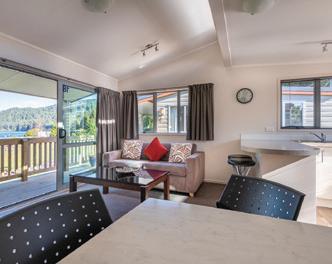


60 | Term 2, 2024 Learning Space | EOTC www.nzsurfacademy.co.nz
Schools
is an amazing sport that will challenge, entertain and educate.
Safety Days | School Camps NCEA Achievement Standards P. 027 734 4877 E. surf@nzsurfacademy.co.nz Northland wide | Orewa | Tawharanui | Mt Maunganui
Surfing Education for
Yr 3-13 Surfing
Beach
For more information please call 0800 808 292 or visit www.bluelaketop10.co.nz
am me
am worthwhile
I
I
A time to refocus Help your students get back on track by a change of environment, EOTC and even team building to grow their support structures.
A hub to explore nature
Taylor Lodge is a familyrun and operated business based in the Ruapehu region. The business is owned by the Tuck family, a family of six who live nearby the lodge and run the entire business themselves.
Previously from Tauranga, your hosts Ben and Kylie have a passion for the outdoors and want the lodge to be a centre point for groups to enjoy nature in all kinds of outside excursions.
Taylor Lodge is in close proximity to Mt Ruapehu, Mt Tongariro and Mt Ngauruhoe making the area a perfect location for skiing, biking and tramping.
As well as one of the famous Great Walks nearby, the Tongariro Crossing, there are plenty of other exciting activities close by including rock climbing, horse trekking, water rafting and more.
The lodge is perfect for school or other larger groups; however, families are slowly being introduced into the mix. “A purpose-built facility for self-catering which suits clubs, families, schools and large groups on a budget.”
There are many features available at the lodge including three fridges, a pool table and foosball.
With 46 beds in 11 different rooms, a large kitchen, multiple common rooms, a drying room for ski gear and a new outdoor heated barbeque, Taylor Lodge is perfect for your next school camp’s location.
To book your next school excursion call the lodge today on 06 385 3210 or email them at info@taylorlodge.co.nz.
For more information visit their website at: www.taylorlodge.co.nz.
Taylor Lodge
20 Pokaka Road, Erua Tongariro National Park (06) 385 3210
Fun and adventure
Riverside Adventures located in the Waikato offers fun filled adventures for your next school excursion!
Perfect for your outdoor education classes or groups wanting an adventure and a challenge, Riverside Adventures recommend their amazing adventure race!

The adventure race is based in the South Waikato, including multiple fun activities:
• Swimming
• Run/Walk (to find clues and answers to riddles)
• Biking
• Kayaking (to find clues)
• Brain teasers
• Secret challenges.

Nestled just off SH4, Taylor Lodge in Pokaka is a secluded property surrounded by nature, providing a feeling of ‘getting away from it all’ while maintaining convenient access to Ohakune, National Park and all that the Ruapehu District has to offer.
Catering NOW AVAILABLE, or self-cater to suit your needs
SLEEPS 46 | Ideal for Families & Large Groups
Discounts for Schools/Community Groups




Family Owned and Operated - Ben & Kylie Tuck
Phone: 06 385 3210
Email: info@taylorlodge.co.nz
www.taylorlodge.co.nz
Riverside Adventures also offer bike skills sessions at their new location at the Grassroots Trust Velodrome.
Their experienced instructors begin with foundational skills and progress to riding the pump track, finally finishing with a breathtaking journey along the Te Awa River Ride if time and skills allow.
Bike skills sessions are fully customizable, tailored to meet the specific needs of each group.
Additionally, we have a fleet of bikes available for schools and shuttle services to bring them to you for added convenience and flexibility. If an adventure race or a bike skills session sounds like the next adventure for your school group, then look no further.
Riverside Adventures
396 Horahora Road, Piarere 0800 287 448 info@riversideadventures.co.nz www.riversideadventures.co.nz



Adventuremark Safety Audited | Experienced Guides
Biking, Kayaking, Adventure Races, Paddle Boarding and more


Contact us to create day or multi day adventures for your group, Phone 0800 287 448 | www.riversideadventures.co.nz
Term 2, 2024 | 61 Learning Space | EOTC
Play. Stay. Explore.

Pakawau Beach Camp Golden Bay
Pakawau is found at the Northern end of Golden Bay just 14km’s from Collingwood. Pakawau Beach Camp sits on the sea front enabling you to enjoy the sounds of waves meeting the shore, to amazing sunrise and sunsets over the ocean.
Come and pitch your tent, park your camper van or stay in one of our beach front cabins. Less than a 20-minute drive from Pakawau you will discover an abundance of stunning scenery including, Cape Farewell, Farewell Spit, Puponga Farm and Wharariki Beach.
After a fun day out, enjoy casual dining at the Old School Café Restaurant, right across the road.


1112 Collingwood-Puponga
Main Road, Pakawau
Ph: 03 524 8308
www.pakawaubeachcamp.co.nz



SERVICES | REPAIRS | SHOCKS & BRAKES EXHAUSTS | WOF | TYRES | AIRCON BATTERIES | WHEEL ALIGNMENT New Reception & Parking off Sammaree Place KERIKERI PHONE: 09 407 8646 We are open Monday to Friday: 8:00am - 5:00pm, Cnr Mill Lane & Sammaree Place www.pitstop.co.nz
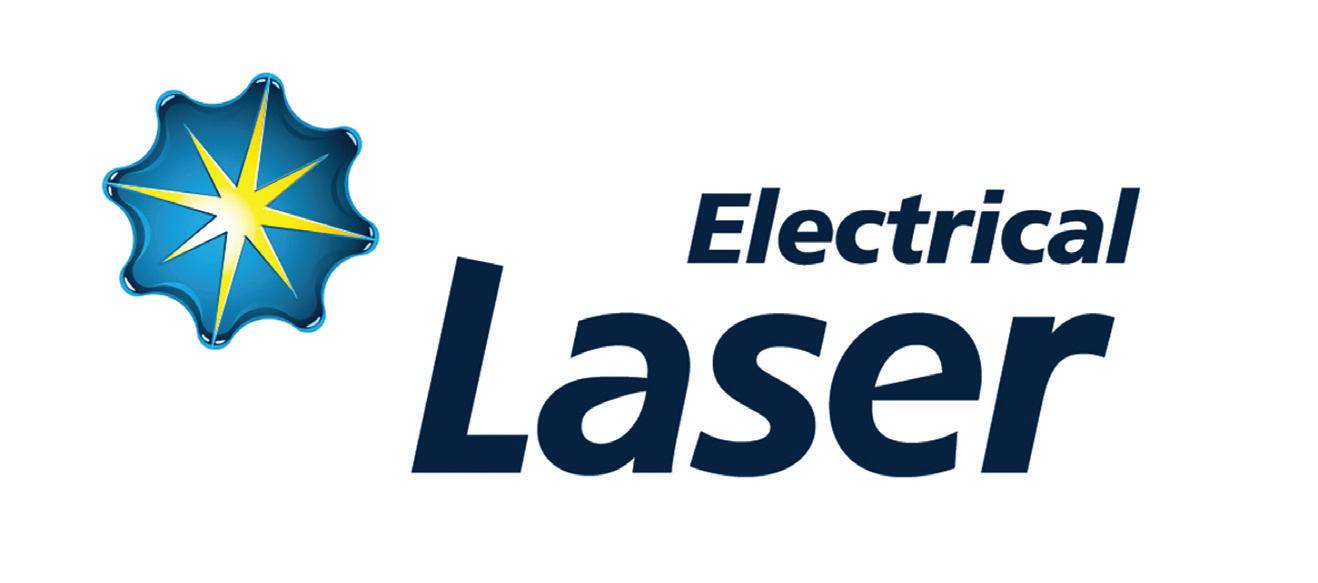
Laser Electrical Hastings have long established themselves as a leading electrical contractor in the local area, servicing the Hawkes Bay region.

Specialises in the following services:
Our successful operation is due to our dedicated team of electricians who strive to provide our customers with a “Totally Dependable” service with a strong focus on customer satisfaction. We have expertise in a wide range of electrical services from residential to commercial and industrial. “Totally
When you hire a Laser Electrician, you’ll receive our ‘Totally Dependable’ service!
Meet and frequently exceed our customers’ expectations
Commercial Domestic Industrial Maintenance
P. 06 878 9332 | E. hastings@laserelectrical.co.nz | www.lasergroup.co.nz
Promise of care and skill
and Servicing
Timely delivery
Appropriate work for customers’ needs Well-presented, professional employees
Ensure responsibility of material supplied Honour manufacturer’s guarantees
Dependable”

Precision. Punctuality. Commitment to excellence.
Farm & Civil Work • House Pads & Drainage
Jdex Contracting has been a leading Excavator Contractor since 2018. I’m a fully-certified professional ready to tackle anything from complex and large scale construction projects to minor repair jobs.



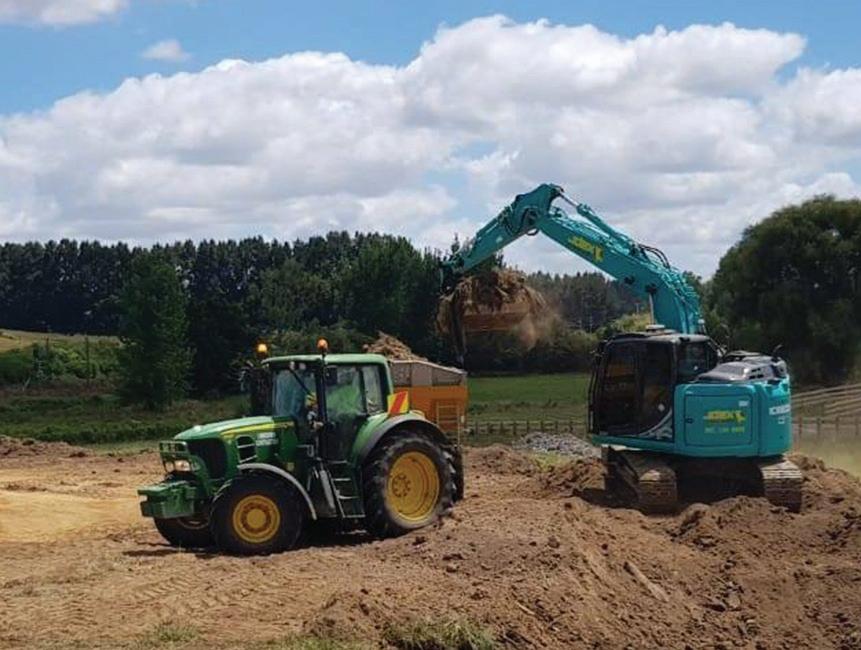


021 190 8809 | josh@jdex.co.nz | www.jdex.nz

The era of synthetic sports turf surfaces
Synthetic turf surfaces are becoming increasing common in New Zealand and around the world.
Modern synthetic turf is a grasslike ground cover that resembles natural turf in both appearance and the way it performs.
It is designed to meet the playing requirements for the specific sport the field is intended for, provide comfort and safety for the players, withstand a range of often harsh climatic conditions, and be sufficiently durable to perform for eight to 10 years.
In some cases, the synthetic sports turf will need to meet the requirements of multiple sports.
Today there are a large variety of synthetic turf systems available. Many of these are similar to each other in concept, but the materials used to create
them, and their methods of manufacture, vary.
Choosing a synthetic surface comes down to the specifications of the sporting code, including the performance requirements and playing characteristics of the main sport the field is designed for.
There are six main types of synthetic surface currently available:
1. Non-filled
2. Water based
3. Sand-filled
4. Sand-dressed
5. Rubber/sand-filled long pile turf (3rd generations)
6. Needle-punched carpets.
When considering installing synthetic turf it is also important to fully consider the advantages and disadvantages of doing so.
It offers consistent playing quality (traction, firmness, speed, ball rebound) throughout the year because it is not subject to quality variations due to environmental conditions, or pest/disease damage.

66 | Term 2, 2024
Modern synthetic turf is a grass-like ground cover that resembles natural turf in both appearance and the way it performs.
Advantages of synthetic turf
The main advantages of installing and using synthetic turf include:
• It can provide high levels of use (30-50 hours of senior use per week) on a regular basis because it doesn’t suffer the same wear as natural turf
• It offers consistent playing quality (traction, firmness, speed, ball rebound) throughout the year because it is not subject to quality variations due to environmental conditions, or pest/disease damage
• These two factors combine to provide a much higher predictability of use of synthetic turf than natural turf, meaning event planning can be more certain
• Having one or more synthetic surfaces can free up other parks for play or ease playing pressure on neighbouring natural surfaces
• Synthetic surfaces can potentially increase revenue from hireage.
Disadvantages of synthetic turf
• High cost of initial installation, and an asset management plan will be required to plan for the replacement of the surface – synthetic surfaces will conservatively have a life span of 10-20 years
• Lack of proper or regular maintenance will reduce the lifespan of the surface significantly
• Heating of black crumb rubber infill can increase the risk to players from heat stress or require daytime irrigation
• Fibres in older systems, and sand or rubber infill can cause friction burns for players, particularly in sports where players often slide along the surface
• Older crumb rubber infills may have toxic components
• Synthetic turf materials can degrade into micro-plastics (particles that are five millimetres or smaller), which can be washed into drains and so into the wider environment and cause damage to a wide range of animal life.
Maintaining synthetic turf
While synthetic options offer benefits in reducing the maintenance requirements of natural turf, they are not completely maintenance-free.
It is therefore important to be aware of all the advantages and disadvantages of replacing your natural turf with a synthetic surface, and how they might impact your site specifically, before committing to any change.
Some regular maintenance tasks should be carried out weekly and are aimed at cleaning the surface of debris (leaves, twigs, litter, gum). Others will depend on the level of use the surface receives.
Synthetic turf should also have various renovation tasks including deep cleaning the infill material, grooming to ensure the infill is uniformly distributed, decompaction (maintain drainage) and moss and mould treatments.
The frequency for carrying out these tasks depends on the level of use of the surface and the type of task.
Decision time
Before deciding on which synthetic carpet suits your needs it is important to engage a suitably qualified agronomist and contractor to ensure you are receiving the right information about the product you are purchasing and that the correct installation process and warranties will be engaged.














Term 2, 2024 | 67 Sport Fields | Surfaces Your One-Stop Shop For Turf, and Erosion Control in Auckland. HAY MULCHING LAWN SERVICES EROSION CONTROL HYDROSEEDING GRASSING SPORTS FIELDS & TURFS P: 027 477 7335 AH: 09 835 4441 E: exlers@xtra.co.nz 34 Temuri Place, Glendene, Auckland 0602 www.exlersturf.co.nz

Transform your school’s sports field Performance, safety, and visual appeal!
Urban Turf Solutions manufacture and install artificial turf for school sports fields. Our products not only offer top-notch performance for sports activities, but also look great and add a colourful visual appeal to your grounds.
Urban Turf Solutions boasts a diverse product range designed to meet the specific needs of schools across New Zealand. We have products designed for multisport courts, hockey fields, football fields, tennis courts, cricket wickets, putting greens and playgrounds.
Urban Turf Solutions artificial grass has a durable construction and advanced technology, their turf ensures optimal playability and safety for students
engaging in sports activities. From preventing slips and falls to cushioning impacts, Urban Turf Solutions turf keeps your students safe while they play.
“Whether you need a dedicated 5-a-side soccer field, a multipurpose sports surface, or even a playground, Urban Turf Solutions has the perfect turf solution for you.”
What’s more, Urban Turf Solutions artificial grass requires minimal maintenance, saving your school time and resources

in the long run. Urban Turf enhances the overall appeal of your school and the courts and turf facilities are a great resource for the wider school community.
Whether you need a dedicated 5-a-side soccer field, a multipurpose sports surface, or even a playground, Urban Turf Solutions has the perfect turf solution for you. By choosing Urban Turf Solutions artificial grass for your
school’s sports surface, you’re not just investing in athletic enjoyment – you’re investing in the overall attractiveness and reputation of your school.
Don’t miss out on this opportunity to transform your school’s sports field into a showpiece that will impress students, parents, and visitors alike. Contact Urban Turf Solutions today.
info@urbanturfsolutions.co.nz
































































Sport Fields | Surfaces





Urban Turf is an excellent solution for schools looking to create safe, low-maintenance outdoor spaces and multisport surfaces.
With its realistic appearance and durable construction, it provides a perfect playground surface. Our multisport turf range is ideal for new sports courts and fields or the replacement existing ones.
Urban Turf Artificial grass eliminates the need for constant watering, mowing, and fertilizing, which can be timeconsuming and costly.
By installing Urban Turf, schools can save money on maintenance costs, reduce the risk of injury, and create a beautiful outdoor area that encourages students to engage in physical activity and outdoor play.
0508
268
urbanturfsolutions.co.nz
North
42b Porana
Wairau
0627
Casebrook, Christchurch 8051 Contact us Made in Australia
New Zealand-wide installers
From concept to completion
choose us
your
872
Island
Road,
Valley, Auckland
South Island Unit 6, 67 Barnes Road,
Why
Transform
school’s outdoor space
No job is too big or too small!
From kitchens, bathrooms and laundries, to commercial fit outs and everything else in between!
No job is too big or too small for the team at Newton Gordge Joinery. The team takes extreme pride in delivering expert craftsmanship and has a passion for creative ideas.
The company was established in 1981, taking the name of its owner-operator Newton Gordge who has over 40 years experience in the trade, serving both domestic and commercial clients in Taranaki and nationwide.
After Newton’s retirement in 2016, former apprentice and foreman Scott Dudley with 18 years of service to Newton Gordge Joinery took ownership
of the business, moving forward as Newton Gordge Joinery 2016 Ltd.
Kitchens are a big part of what they do. It’s the heart of the home which is why the team will work with you to create a kitchen that is exactly what you want and need.
The team will use a computer aided design programme, enabling them to show you a 3D image of your kitchen prior to finalising your order.
Domestic Joinery is also in high demand, from bathroom vanities, laundries, wardrobes and so much more. If it’s storage alterations or tweaks around the house that you’re after, then give this capable team a call, no job is too small.
Commercial Joinery is an area of work that Newton Gordge Joinery are extremely proud of.

From school fit outs, business offices and restaurants, all of their work is crafted to a high standard. Newton Gordge joinery incorporates cutting edge skills and design into their work to create unique and innovative joinery solutions. Included in their services to you is an in-house site measure, design, delivery and installation. Whatever you are after, they are sure to bring your dreams to reality. No job is too big or too small!

The team at Newton Gordge Joinery are just a phone call away on 06 751 5065 or pop in and see them at their showroom at 67b Breakwater Road, New Plymouth.
06 751 5065 designs@newtongordge.co.nz 67 Breakwater Rd, New Plymouth www.newtongordge.co.nz • Kitchens • Domestic Joinery • Commercial Joinery NO JOB IS TOO BIG OR TOO SMALL


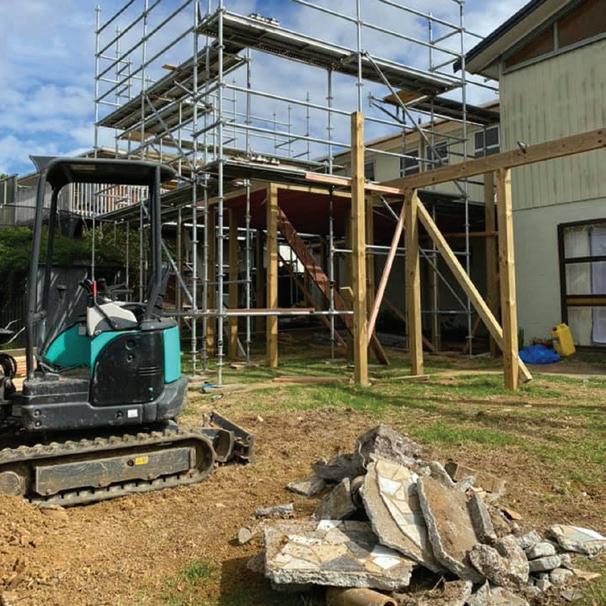






• PLUMBING • DRAINLAYING • GAS SUPPLIER & FITTING • ROOFING K J Morgan Plumbing Ltd 11 Purkiss Street, PO Box 925, BLENHEIM 7240 t: 03 578 0060 e: info@morganplumbing.co.nz www.morganplumbing.co.nz Truck and diggers available to do earthworks, residential building work, retaining, drainage & foundations. 021 815 456 | mmbuildingltd@gmail.com LOCALLY OWNED AND OPERATED KIWI COMPANY SERVICING THE AUCKLAND AREA.
23 Mill Lane KERIKERI P: (09) 407 9097 Opua Estate PAIHIA P: (09) 402 7993 A/H: 0274 743 438 E: northland@laserelectrical.co.nz • Underground Power Supplies • Maintenance & Service • Under Tile Heating • Whiteware Repairs • New Installations • Security Alarms • Air Cons / Heat Pumps • Rewires • Garden & Security Lighting • Lighting Design & Installations

Recently I was invited to korero with some 11 and 12 year-olds to explore their working theories on nutrition. We began by unpacking the concept of ‘healthy’.
I was intrigued by their prior knowledge. They showed curiosity and excitement as they all entered this discussion. They contributed ideas such as ‘good for the body’ and ‘fruit and vegetables’, although some seemed uncertain about what exactly constituted a balanced diet. Their enthusiasm waned as they struggled to articulate further details.
Adolescence marks a crucial stage where both personal and external factors shape food choices and attitudes, which can have lasting effects. Despite their significance as future household decision-makers, adolescents’ perspectives of their food environment remain relatively unexplored.
A study conducted in Queensland recently shed light on how adolescents perceive their food environment, describing their eating habits as
Good nutrition always matters
By Anya Bell, menu development manager from the Libelle Group
‘healthy-ish’, involving rewards like chocolate for healthy eating and considering fruits as inherently healthy.
The focus group moved onto describing what ‘healthy’ looks like, prompting debates on whether one can gauge health solely based on appearance. We delved into strategies for determining the healthiness of
importance of nourishing food sources.
However, children often lack an understanding of the health benefits of food, preferring to base their preferences on taste and social experiences. They intrinsically trust that we are providing food that will nourish them.
Adolescence marks a crucial stage where both personal and external factors shape food choices and attitudes, which can have lasting effects.
food, such as reading ingredient labels, checking for allergens, and interpreting nutrition information like the Health Star Rating.
The students were particularly curious about why fruits and vegetables lack nutrition labels.
As children progress from infancy to adolescent and beyond, they acquire knowledge about food selection, how to procure and prepare food, value and social context of food and eating, where food comes from, how it gets to our plate and the
This preference for concrete learning challenges the effectiveness of teaching nutrition concepts, suggesting that focusing on teaching about food, rather than nutrition, may be more beneficial.
We could describe as an apple as red and crunchy, or green and tart, rather than describing it as healthy.
School lunches provide an ideal opportunity to promote nutritious eating habits, with research indicating that even
one nutritious meal a day can positively impact health.
However, pressuring children to eat can backfire, leading to anxiety around eating. Instead, fostering positive attitudes towards food and avoiding labelling foods as ‘healthy’ or “unhealthy” is more likely to encourage healthy eating habits. To motivate children to embrace healthy school lunches, we can employ various strategies. Positive messaging about food, focusing on its sensory aspects, and creating shared eating experiences can nurture their curiosity and enthusiasm.
Additionally, extending their learning beyond individual foods to topics like food systems and sustainability can broaden their understanding.
Meanwhile, the focus group embarked on a practical exercise designing food packaging prompting them to consider aspects they typically overlook.
Reflecting on this experience, I wonder if it encourages you to reconsider how you approach discussions about food and eating with your children.

74 | Term 2, 2024 Working Space | School Lunches
FEEDING LEARNERS HUNGRY GREAT FOOD

Healthier food options for New Zealand’s hungry learners.
It’s simple: Let our professionals feed hungry students, while your professionals feed hungry minds. APPROVED




• Top quality, freshly made lunches for learners.
• On-site or delivery service, tailored to suit you.
• Professionally audited food control plan.
• Trained, qualified, local sta .















BE PART OF THE JOURNEY. LET’S TALK. +64 21 709 138 | www.libelle.co.nz
LUNCH SERVICE SCHOOL PROVIDER


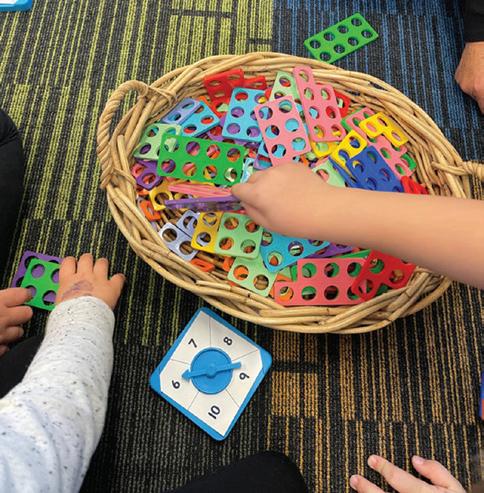


Unlock mathematical potential with Numicon! Our structured, globally acclaimed programme embraces a cyclical learning approach, solidifying concepts for lasting understanding. Supported by decades of research and a thriving educator community, Numicon employs the Concrete-Pictorial-Abstract method, empowering students through handson exploration. From foundational to advanced levels, students develop critical thinking and communication skills effortlessly. Elevate your teaching with comprehensive professional development, ensuring confident educators. Join the proven success



GET THE RIGHT ROOF OVER YOUR HEAD WITH OUR MARLBOROUGH BASED ROOFING PROFESSIONALS
03 578 0060
Purkiss St, Springlands, Blenheim 7201
NUMICON MAKES MATHS REAL A detailed scope and sequence
engaging
approach
& engaging
LOOKING FOR A STRUCTURED
TO MATHEMATICS?
Contact us: admin@edushop.nz
to learn more?
Phone
info@morganplumbing.co.nz 11
www.kjmorganplumbing.co.nz
Multi-sensory,
Whole-school
Systematic
Teacher confidence
APPROACH
of Numicon today!
Want


Residential & Commercial Glass Experts



If you require anything glass, from a small window or mirror repair around your home to a glass facade for your large commercial glazing project, no job is too big or too small for CM Glass.
849 6554 | info@cmglass.nz | 5 Norris Ave, Te Rapa, Hamilton
CONTACT US TODAY
07
www.cmglass.nz


Staying safe at school
Health and safety strategies play a large role in the day-to-day functionality of modern-day classrooms and schools.
There is much to consider in regards to health and safety in the classroom to ensure staff and students are safe and comfortable in their environment.
The Ministry of Education (MOE) has many resources and information pages which can provide teachers and kura with informative explanations on how to handle almost any situation. Some of their resources for health and safety in schools
Winter slips, trips and falls
Each year thousands of workers are hurt in often preventable accidents caused by slips, trips and falls.
Slips, trips and falls account for many of the injuries in workplaces and can easily happen during the winter.
They can also cause very serious injuries, mostly to the ankle, knee or back, leaving workers with long-term problems which can significantly affect their quality of life.
Many slips, trips and falls are preventable, and there are often low-cost solutions you can put in place to eliminate or control the risk.
Watch out for:
• Poor housekeeping/messy sites
• Ground clutter
• Unstable surfaces
• Uneven or slippery floor surfaces
• Lack of signage
• Poor lighting
• Unmarked changes in floor levels
• Damaged flooring
• Lack of/not using hand rails.
include guidance for setting up a healthy and safe environment for students who may have been diagnosed with a health condition, severe allergies, cancer, or even a brain injury.
Ensuring that good enrolment procedures and records are taken during initial meetings with new students is crucial to protect the school for any health or wellbeing risks.
What you can do:
• Keep work and access areas clear
• Take time to tidy as you work
• Pay attention to your surroundings
• Put tools away
• Keep areas well-lit
• Wear suitable footwear with good grip
• Keep deliveries and skips always from work areas and access points
• Have designated areas for waste collection and provide skips and bins
• Use cordless tools where possible.
• Communicate with workers and visitors about hazards
• Allow extra time when conditions are slippery
• Check your path is clear before carrying loads
• Treat slippery surfaces with stone or grit, depending on the conditions
• Make sure you signpost any slippery areas.
Information kindly provided by Worksafe New Zealand. For further information, visit: worksafe.govt.nz.
78 | Term 2, 2024 Health & Safety | Risk Management
“To ensure a healthy and safe environment for ākonga, staff and whānau, there needs to be good systems and processes in places for managing risks and hazards.”
Establishing clear communication between staff in regards to locations of emergency kits, as well as relevant training required, will mean during an emergency correct procedure will be followed.
The MOE says a clear conversation between staff and whānau is needed for administering medications, sharing details and communicating with staff and other parents about health conditions (if needed) is important.
For some learners a detailed health plan is needed between whānau and the school. “Every learner’s response to and experience of a health condition is different.
“The impact on a learner’s hauora and learning will depend on many factors and will change over time,” says the MOE.
The MOE suggests some learners may make leaps and others may experience set-backs due to potential health conditions.
Checking in often with students and gently supporting growth is positive. Outlining realistic expectations is one way to demonstrate successful health and safety strategies.
Promoting healthy lifestyles is another aspect to health and safety according to MOE. Healthy Active Learning is a voluntary initiative established by the MOE.
Irritability and anger
Irritability is a feeling of agitation. You’re likely to become frustrated or upset easily.
Most people feel irritable from time to time, but if left unchecked these feelings can escalate to anger.
Anger is generally a reaction to an event (a defensive response), involving a mixture of complex feelings that trigger a response in our body, behaviours and thought processes. But unmanaged anger can become a problem.
Here are some helpful tips:
• Ask yourself:
- ‘Will the object of my anger matter in the future?’
- ‘What is the worst consequence?’
- ‘Did that person do this to me on purpose?’
• Say ‘I was wrong’ to someone
• Think about when and where you learned your reactions to anger
• Spend 10 minutes outside sitting in a park or garden

The programme is free of cost and contributes to one of the Government’s key priorities - improving the wellbeing of children and young people.
Managing risks and hazards in the school environment is a significant part of health and safety.
“To ensure a healthy and safe environment for ākonga, staff and whānau, there needs to be good systems and processes in places for managing risks and hazards,” the MOE says.
To ensure staff and students will be safe during an
emergency, establishing clear communication between whānau and kura will mean resolving a situation will be as smooth as possible when needed.
Having conversations with families and referring to resources provided online when needed means you will be prepared for most emergencies if they arise.
To find out more about health and safety in schools, make sure to visit: education.govt.nz.
Put your energy and effort into changing the things you can change.
• Laugh at a joke, situation, or yourself
• Avoid doing two things at once (such as eating and reading)
• Talk to someone who you are not feeling angry with
• Slow down – try a deep muscle relaxation technique
• Try some ‘new and improved’ variations of counting to ten. For instance, try counting to ten with a deep slow breath in between each number.
• Deep breathing - from your diaphragm - helps people relax.
In addition to psychological changes, like any emotion, anger is accompanied by physiological changes such as increased heart rate and blood pressure.
Irritability and anger are signs that something is wrong, and if those signs are recognised, they can be used positively and energise us to deal with situations.


Do you need strategies for coping with change? A Vitae counsellor is independent, objective and confidential
Call 0508 664 981 24/7 to make an appointment, or book online at vitae.co.nz/contact/counsellingform/
Term 2, 2024 | 79 Health & Safety | Risk Management



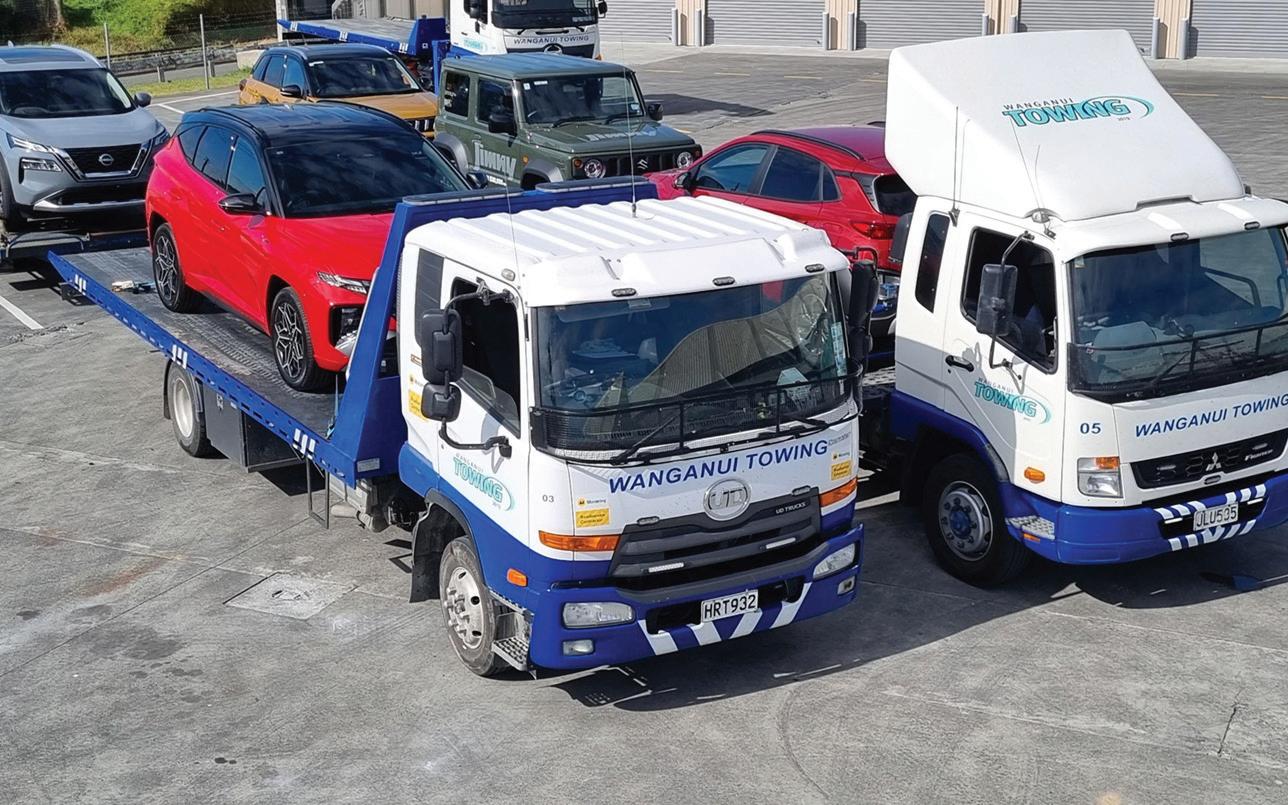


BIG OR SMALL WE TOW IT ALL We offer a full 24-hour towing service, providing prompt, efficient and courteous attention to vehicle breakdowns and disposal needs. • Accident • Breakdowns • Vehicle Storage • Crane work • Transport (Central North Island) P. 06 241 7266 or 027 443 5449 1 Liffiton Street, Wanganui | wanganuitowing.co.nz

PROMOTING ROAD SAFETY AND EDUCATING THE COMMUNITY ON SAFER ROAD USE.
It is our aim to reduce the number of incidences of road trauma and crashes throughout Mid & South Canterbury.


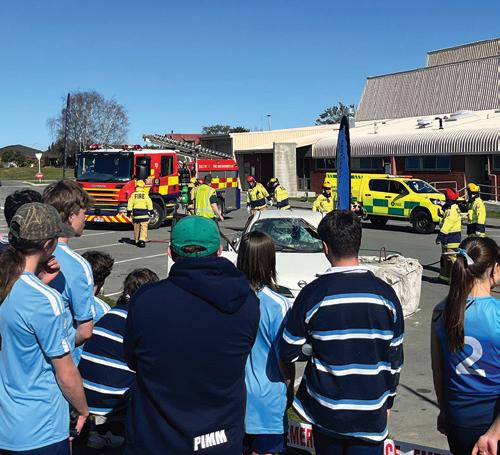


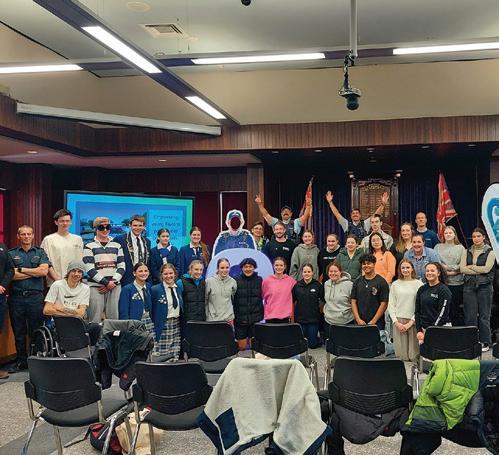


Since starting in the role of South Canterbury Road Safety Coordinator, Lucy Mehrtens has worked with many schools across the region. Working with both primary and secondary schools has been a great way to connect with the local community plus work collaboratively with key agencies. The collaboration between agencies in South Canterbury was recognized nationally by Kaitiaki o Ara SADD (Students Against Dangerous Driving).
“We want to educate students on all aspects of road safety from the curbside drill to learning to drive, helping them make safer choices when it comes to using the road network.”
Lucy’s role at the council concerns more than facts and statistics. The University of Canterbury alum knows first-hand what being in a car crash is like.
“I have experience of what it’s like. There is the impact of the crash and the ongoing stuff that people don’t realise—the effect it has on your family and friends and the impact on the emergency services
“When you go through something like that, it changes your outlook and makes you re-evaluate what you should be doing and what makes you happy. And that’s one of the reasons why I wanted this job. I don’t want other people to go through what I went through.

Over the last year working with WAVE South Canterbury, Aoraki Police, Mid and South Canterbury Fire and Emergency New Zealand, South Canterbury St Johns, Hilton Haulage and Kaitiaki o Ara SADD we have organized some great events and promotions specifically targeted to school students.
10 schools in South Canterbury are lucky to have access to a VR driving simulator designed by GFactor and managed by Liam Brown at Venture Timaru. The simulator is a great tool to help students in their driving training journey. There is also a mobile unit which allows us to take the simulator to events and around the district. Last year we took the trailer to Twizel where many members of the public had a go at the simulator over two days.

Lucy Mehrtens
E: lucy.mehrtens@timdc.govt.nz
P: 027 288 2583
Simplifying regulation compliance with comprehensive surveying solutions
With nearly a decade of experience, Trace Asbestos offer extensive surveying and assessment services across Wellington, Taranaki, Manawatu, and Hawkes Bay.
Owned and operated by asbestos expert Steve Elden-Gray, Trace specialises in several industry surveys to accommodate various client needs.
Steve provides clients with a unique perspective on asbestos services thanks to his background in sports and exercise science and operational management. He’s qualified in BOHS IP402 and IP404 and has an asbestos assessor licence from WorkSafe NZ.
Trace Asbestos started with the goal of assisting and simplifying asbestos regulation processes, addressing the challenges faced by homeowners, project managers, and business leaders alike.
Trace Asbestos are masters of asbestos surveys:
Asbestos management surveys
An asbestos management survey is the standard review recommended for any building and workplace. It’s an important step in producing a functioning asbestos management plan that actively monitors the materials and manages risks.

The survey identifies and measures the asbestoscontaining material in a building that could be damaged or disturbed during normal occupancy and maintenance.
Asbestos refurbishment and demolition surveys
Asbestos refurbishment and demolition surveys locate and describe asbestos-containing materials in areas where intrusive maintenance, repair, refurbishment, or demolition work is planned. This survey requires access to all areas, including those that may be difficult to reach.
Undertaking asbestos refurbishment and demolition surveys before any renovation or demolition works is a strict regulatory requirement and a duty of any PCBUs that manage or control a workplace.

“Trace Asbestos makes active asbestos management simple. Whether you like paper or cloud-based systems, every survey can and should be backed up with a sitespecific plan.”
Other asbestos surveys
Only some clients or sites meet the requirements for the above surveys, and Trace Asbestos offers visual survey options and re-inspection surveys for such situations.
These are great for annual check-ups and audits, maybe a second opinion for your site, and excellent due diligence for prepurchase or sale.
Trace Asbestos makes active asbestos management simple. Whether you like paper or cloudbased systems, every survey can and should be backed up with a site-specific plan.
You can then control and update this plan yourself, or you could have someone else manage that process on your behalf
Trace Asbestos has excellent online client management
systems can control staff and contractor access to your asbestos information.
Trace Asbestos doesn’t remove asbestos; a WorkSafeapproved licensed asbestos removalist must do this. By assisting you with the asbestos removal management and tender process, Trace Asbestos can ensure compliance with regulatory and client procurement processes.
Trace Asbestos provides asbestos testing services using only BOHSaccredited surveyors. Using qualified personnel ensures you get a valid asbestos test (without cross-contamination) that represents the materials sampled and enforces protocols after a test to minimise the risk of further contamination.
As with all of their work, when conducting asbestos removal clearances, Trace Asbestos aims to provide a fair and unbiased approach, completing the job without compromising their duties.
Asbestos removal projects can be time-consuming, expensive and high-liability exercises to undertake. Enlisting professionals ensures your project is done right the first time.
Contact Trace Asbestos at 027 477 8673 for professional asbestos surveying services or visit www.traceasbestos.co.nz.





Contact us today to talk about your requirements and how we can help. Steve Elden-Gray 027 477 8673 | Pinehaven, Upper Hutt, Wellington | Steve@traceasbestos.co.nz www.traceasbestos.co.nz We work on a variety of jobs from high-end fit-outs to full site demolition. Are you planning a demo or renovation project? Asbestos Testing Asbestos Management Air Monitoring and Removal Clearance Asbestos Surveys
The asbestos factor
Many New Zealand schools still contain asbestos and asbestos containing materials.
With over 2,000 schools in the Ministry of Education’s portfolio, they’re committed to the management of asbestos and have staff available to provide technical support and advice.
Ministry of Education Leader (Hautū) Infrastructure and Digital, Scott Evans, says while they don’t have a national view on how many schools contain asbestos, buildings constructed or renovated prior to 1 January, 2000 are likely to contain the material.
“The use of building materials containing asbestos was widespread in New Zealand and overseas until the late 1990s because of its insulation characteristics, tensile strength, chemical resistance, acoustic protection and low cost,” Scott says.
“Given the age of the school buildings across the country, asbestos or asbestos containing materials might be present in many schools.”
Asbestos can be dangerous when inhaled which is why it needs to be removed if it’s found in a building. Scott says that when asbestos is left in place and is in good condition, it doesn’t pose a significant health and safety risk.
“However, if it (asbestos) is disturbed during refurbishment,

demolition, excavation or due to deterioration, there is a risk of asbestos fibres becoming airborne and causing potential health problems for anyone who may inhale the fibres,” Scott says.
“The danger for schools is when the asbestos has not been identified and the risk has not been assessed to allow appropriate management.
“It is important to have a clear understanding of where asbestos might be present to allow the appropriate controls to be put in place. These controls might include actions as simple as restricting access to an

area through to a full removal of the material.”
Asbestos could be found in vinyl floor tiles, roof sheeting, ceiling tiles or in textured ceilings, door and window mouldings, cladding, insulation and boiler sheds.
Scott says the best way to know if there is asbestos in a school building is to employ a qualified asbestos surveyor to assess the building.
“This is particularly important if you are about to undertake construction work at your school, as asbestos is often found during refurbishment or demolition of existing buildings.
“Before starting any construction work, your contractor must see your Asbestos Management Plan. If your building is assumed to have asbestos, the contractor needs to undertake a further demolition or refurbishment survey,” he explains.
An Asbestos Management Plan will set our how the identified asbestos or ACM will be managed.
Scott says schools will need to engage an asbestos surveyor
Asbestos could be found in vinyl floor tiles, roof sheeting, ceiling tiles or in textured ceilings, door and window mouldings, cladding, insulation and boiler sheds.
or competent person who has a good working and formal knowledge of asbestos management to make sure it’s done properly and in accordance with the WorkSafe guidance.
“Asbestos removal must be carried out by a licenced asbestos removal contractor,” Scott says.
“They must hold the appropriate licence for the asbestos task being undertaken and prepare and deliver an asbestos removal control plan.
“In addition to the removal contractor there is a requirement for asbestos work to be signed off by an independent licenced asbestos assessor who will oversee the process from the initial setup through to final sign off.”
School boards and principals must ensure that all asbestos in schools is identified and if so, any risks arising from the asbestos are managed to eliminate or minimise exposure.
The Ministry has developed an asbestos management process to ensure asbestos is managed in schools both on a day-to-day basis and during construction projects.
These processes include having and managing an asbestos management plan, have a contractor sign in process and much more.
For more information, visit: www.education.govt.nz and www.worksafe.govt.nz/asbestos.
84 | Term 2, 2024 Property | Asbestos

Industry leaders in mould remediation, occupational hygiene and hazardous materials management. Assisting schools nationwide since 1991. 0800



Mould remediation
IICRC certified mould experts specialising in the education sector


Occupational hygiene Services to identify and reduce exposure to hazards in your school
Asbestos Consulting, Removal and Surveying
NZs leading asbestos experts
Contact us today for free advice or to discuss a particular project.
33 11
I Whangarei I Tauranga I Hamilton I Wellington I Christchurch
33
www.morecroft.co.nz Auckland


At Seddon Park Funeral Home we’ve been proudly celebrating life with you for over 25 years.
Hamilton Park Cemetery and Crematorium | Funerals
Eco Friendly Funerals | Memorials | Ash Options | Bereavement
P. 07
846 1561 - E. info@seddonpark.co.nz - www.seddonpark.co.nz





BERNINA New Zealand
BERN I N A 3 SER I ES SEW I N G M ACH I N E

30 % S aving on RR P fo r S chool s
Technology in the sewing world has advanced greatly in the last twenty years, however, many schools still replacement.
BERNINA NZ offer special school prices on a full range of machines suited to the demands of the modern classroom. We
robustness of our machines, we believe that a machine that lasts is the right investment to make in schools. Machines in classrooms need to be durable and user friendly but also suitable to meet the demands of students from Years 7 - 13 and beyond.
We still have the heart of the BERNINA machines that teachers, and students, have loved and
trusted for decades but with technology that is advanced enough to keep students engaged during class. Sewing is such an important skill for the future and students deserve the best tools to learn with.
Through our association with HETTTANZ, BERNINA offer training to help your teachers get the most from their machines. We have a nationwide network of trained BERNINA Service Centres to ensure machines can be maintained to last.
To discuss options for your school or for more information, please contact your local BERNINA Store or call BERNINA on 0800 701 818 or email info@bernina.co.nz

e
I
3 S e r
we
e
t i t c h
our
es
e
i d eas .
Th
BERN
N A
ies is small but po
rfu l
nough to s
through y
tough
t ma t
r ials a nd
www.bernina.co.nz

EXPERIENCE 43 TE WHARO DR, PAPAMOA 022 560 5083 papamoahousewash@gmail.com Leading company in washing houses, roofs and gutters.

Breathing easy
A space’s ventilation will be influenced by how it was designed, how it is currently being used, and the outdoor conditions.
Good ventilation will provide fresh, clean air while maintaining comfortable temperature and humidity levels for the people in the space.
Good ventilation helps reduce COVID-19 airborne transmission by quickly and consistently removing the old air and replacing it with fresh, clean air.
Indicators that a space may not be well-ventilated include a feeling of stuffiness, lingering smells and elevated CO2 levels created by the people in the room.
When this is occurring, schools should also consider increasing the use of other measures such as face coverings and physical distancing.
You can quickly improve the air quality in any space by:
• Limiting more vigorous activities, or moving them outdoors or to a better ventilated space
• Limiting the number of people, especially in smaller, confined spaces
• Fully opening all windows and doors to flush the air in the room, and where it’s an option to do so, briefly vacating the room at the same time.
Ventilation, air conditioning and filtration - what’s the difference?
Ventilation and filtration are two different things.
Ventilation can be done naturally through open doors and windows, or by mechanical ventilation units.
Mechanical ventilation might be needed if a classroom doesn’t have windows that open. But for

most New Zealand classrooms in the warmer months, ventilation units are no more effective than natural ventilation.
Air conditioners such as heat pumps are different to mechanical ventilation.
These typically recycle air in a room and change its properties, by warming or cooling it or removing moisture. While these make the room more comfortable, they do not improve its ventilation.
Filtration refers to cleaning the air in a room by running it through
a filter that removes particles (including virus particles) before recirculating the cleaned air.
Some air conditioners are fitted with filters and there are also many types of standalone filtration units available, including portable ones that can be plugged into a standard plug.
Filtration is an option for classrooms with insufficient ventilation (for instance, where there are few or small opening windows) or where fresh air does not reach all parts of the classroom.
88 | Term 2, 2024

Infection prevention and control
To protect your staff and the children in your care from the spread of respiratory infections, and recognising COVID-19 is still circulating, it is important that you follow infection prevention measures and that you support your staff and the people who enter your facilities to do the same.
• The more layers of protection you put in place – such as stay home if sick, washing your hands, vaccination, mask wearing and ventilation – the harder it will be for infection to spread.
• Staff, children and visitors on site should stay at home if they are unwell or have symptoms of COVID-19 or other respiratory illnesses.
Passive ventilation solutions
Aerovent, Sashvent and Ventient
Introduces fresh air into the building envelope
Makes rooms healthier, by improving air quality Easier and more efficient to heat, reducing energy consumption.
Keeping your classrooms healthy on the inside
• Encourage staff to test for COVID-19 using rapid antigen tests if COVID-19 is suspected.
• Support staff to have available vaccinations against infectious diseases.
• Encourage staff and children attending your facility to maintain good hand hygiene.
• Remind staff and children to sneeze or cough into their elbow or a tissue.
• Keep spaces well ventilated.
• Keep spaces clean.
• Ensure your business continuity plan for winter illness is up to date and that your staff are familiar with it.
• Provide visible infection prevention guidance for caregivers and other visitors to your facility.

Property | Ventilation
aplnz.co.nz APL products are exclusively available from our manufacturers nationwide
Comfortable and creative learning environments
With classroom furniture a necessity to a functioning and inspiring place to learn, there are endless choices of furniture available on the market.
In New Zealand alone, multiple classroom furniture companies are available to choose from, all offering unique twists that make your class comfortable and creative.
One New Zealand brand stands out from the crowd. Classroom furniture brand, Furnware, links pedagogy to learning space design. They believe creating actively engaging learning environments support students to learn better.
Independent research done by the University of Waikato and Furnware, shows that comfort in the classroom leads to stronger concentration.
Furnware has designed classroom furniture which is easier for students to use, increases concentration and reduces off-task behaviour.
“We always believed our furniture enhanced learning environments, leading to better learning outcomes.
“In collaboration with partners in academia and the

government, we commissioned an independent report from the University of Waikato to prove it.”
The Institute of Educational Research used a range of methods to investigate Furnware Bodyfurn products over a crosssection of students.
There are a large range of factors to create a successful learning environment, however, comfortable and ergonomically

supportive furniture helps to support students with their learning experience.
Specially designed seating which focused on natural ergonomics have been designed and positioned in particular ways to elevate learning.
Furnware is practical and comfortable and has been designed to specialise in longevity to last in the classroom environment.
CEO of Furnware, Duncan Hope says, “Furnware is different because we think about children with our products.
“It’s always going to be about children and how we can make them comfortable in their learning environment”.
Furnware says they work with a design team who come up with their speciality designs.
“It’s always how furniture can benefit their world of learning.
“We understand furniture is not everything in the classroom,
but it helps students to excel in their environment.”
Owner of Furnware, Hamish White, started the business over 10 years ago when he saw an opportunity for creative and innovative furniture designs for the classroom.
Furnware designs and builds innovative furniture solutions such as their revolutionary Bodyfurn® chair. Their whiteboard tables available in a range of shapes and sizes are popular too.
“Whiteboard tables are the ideal low-tech learning tool, promoting collaboration while affording educators and students creativity in their teaching and learning.
“Children can write or draw to show what they are thinking and feeling. They are a great way for students to express themselves.”
Deputy principal of Endeavour Primary, Leo Spaans says,
Continues on page 92
90 | Term 2, 2024 Property | Furniture
Tauhara College Taupō. Photo supplied by Furnware.
Suzanne Aubert Catholic School Papamoa. Photo supplied by Furnware.



FOR ALL YOUR SCHOOL FURNITURE NEEDS - INCLUDING CELLPHONE LOCKERS! Furnishing Classrooms since1996 sales@smartofficenz.co.nz
376 373
www.smartofficefurniture.co.nz
0800
“Furnware was willing to listen, engage, discuss and have critical conversations with us about how we could achieve our goals”.
He said Furnware worked alongside the school team to create learning spaces and furniture that worked well to meet the educational needs for the students.
Different learning styles and types are well accommodated through the range of stools, tables, desks and lounges Furnware provides which create unique and distinguished learning spaces.
Furnware are currently in the process of expanding to the Pacific and Australasian regions, finding there is a niche for classroom furniture which is focused on kids and catered to their learning.
If you are a school looking for new furniture or you have room in the yearly budget to give some of the classrooms an update, make sure to check out Furnware. There are many options available on the market for
classroom furniture which can sometimes make decision making challenging.
They have an extensive furniture range to suit any classroom. Their product range includes; desks, chairs, lockers, soft furnishings, stools, displays, office furniture, storage and more.
Furnware’s products can also be customised to suit your school, with a range of colours and different materials available.
The team is always happy to help and give advice to their customers. They will also pick up, fix and return if any damages occur to the furniture.
Their tailored range of products are designed to perform in the classroom and improve student comfort and concentration, perfect for any modern-day learning environment.
To find out more about Furnware make sure to visit their website furnware.com to send an enquiry to the team.







Int.elligent solutions for library & learning spaces CONTACT OUR TEAM 0800 884 887 intworkspaces.co.nz customercare@intworkspaces.co.nz Property | Furniture
St Paul’s Collegiate Hamilton. Photo supplied by Furnware.
Suzanne Aubert Catholic School Papamoa. Photo supplied by Furnware.
The Gearbox Factory
The Gearbox Factory located in Auckland, (however with customers nationwide), is your one stop drivetrain shop.
They have been servicing, repairing, overhauling, and replacing transmissions for 49 years. This family run business is a staple for the automotive industry and this has consequently positioned them as one of the top transmission repairers in the country.
Automatics
The automatic staff have well over 100 years’ experience between them. The company has adapted and trained their staff over time with the latest information available from around the world. (Including the inclusion of CVT, DSG and DCT transmissions).
Manuals
Led by a manager with 35 years hands on experience, this area covers all the gear driven

components of your vehicle. i.e. differentials, 4WD/4X4 transfer case, wheel bearings, clutches, and of course, manual gearboxes.
Torque Converters
With their dedicated torque converter department, the company are able to repair, supply torque converter parts, and/or supply torque converters ready built.
What we offer for Auckland based customers, Warkworth to Pukekohe
Servicing all passenger and light commercial vehicles, including vans and small trucks up to 5,000kgs. Ring and book a slot/ drop your vehicle off for the day/ pick up a free courtesy car for you to use.
For transmission, clutch, differential, transfer case or torque converter issues. Ring to book in for a free no obligation test drive and transmission diagnosis OR to arrange for vehicle to be collected on dedicated car trailer*

(up to 2,500kgs). Free courtesy cars* / Free 12 month/20kms OR 18 months/25,000km on parts and workmanship.
What we offer nationwide upon receiving your transmission for modification or repair
Free phone transmission diagnosis (if necessary liaising with garage who removed
your transmission) / Free freight one way* / Free 12 month/20kms OR 18 months/25,000km on parts and workmanship.
*Conditions apply
68D Greenmount Drive, East Tamaki, Auckland 09 274 8340 | 0800 4432 7269 www.gearboxfactory.co.nz
4


4 REPAIRS
4 REBUILDS
4 RECONDITIONING
4 TRANSMISSION SERVICING
SERVICE & REPAIRS TO ALL VANS AND COMMERCIAL TRUCKS UP TO 5,000KGS New Zealand’s oldest and most trusted transmission experts. 68D GREENMOUNT DRIVE, EAST TAMAKI, AUCKLAND www.gearboxfactory.co.nz 0800 4 GEARBOX 09 274 8340 0800 443 272
Front of house managers and our dedicated driver from left to right; Steve HamiltonAutomatics & Torque Converters, Chris Hogg – Manuals, Brian Sare - Dedicated Driver, Steph Dakin - Service Manager & Torque Converter assistant, Paul Harrison - Manuals & Automatics.

Sorting your school’s security
A quick look at the headlines in the media will almost certainly make reference to crime – be it ram raids, theft (both commercial and residential) or serious harm incidents. Unfortunately, schools aren’t immune and often feature in these headlines.
The private security industry in New Zealand provides a critical and often under-appreciated role in helping to protect people and property and helping to prevent, or minimise, the impacts of crime.
The industry employs some 30,000 workers – more than double the size of New Zealand’s Police Force and well over five times those deployed within the New Zealand Army. It also generates in excess of $2.8 billion in annual turnover –approximately 0.8 percent of New Zealand’s GDP.
Security providers (companies and individuals) operate under the Private Security Personnel
and Private Investigators Act 2010, which ensures providers are of good standing and have the necessary training and skills relative to the occupational category they come under.
The NZSA (New Zealand Security Association) is the representative peak body for the industry and whilst membership is voluntary, the Association’s members collectively employ over 24,000 workers and generate approximately 80 percent of industry revenues.
Selecting a security provider
When selecting a security provider there are some basic checks that we suggest schools and educational facilities should undertake:
1. Ensure that they hold the necessary security licenses. You can either ask for a copy of their security licence or check via the PSPLA (Private Security Personnel Licensing Authority) Public Register.
2. Ensure that they are an NZSA Corporate Member. This will verify that they are of good standing, hold necessary
licences and insurance cover and operate in compliance with Industry Codes of Practice.
3. Ensure that all operational staff employed by the provider hold a security licence (also known as Certificate of Approval or CoA). Staff assigned to your site should have their licence/ CoA on display or be able to provide on request. If the licence is blue in colour, it is a Temporary Licence and only valid for a three-month period to allow the holder to complete necessary training and apply for their full licence (green in colour).
4. Ensure the security provider documents service requirements in the form of Standard Operating Procedures (for guarding or protective services) or a System Operational Requirements (for electronic security including alarms, access control and CCTV).
5. Request references –particularly from customers within your immediate area and for similar size and scoped service requirements.
6. Ask provider to outline training provided to staff – both inhouse and NZQA based.
7. Ask provider to outline ability to meet labour resource requirements (including planning for surge situations or potential staff absence through illness or isolation requirements).
8. Challenge any providers who submit pricing significantly lower than other providers and request “open book” pricing:
i) For physical security providers (guard and patrol services) the main cost component is labour. I f one provider is significantly undercutting other providers, potentially they are paying staff below legislated requirements or using sham contracting arrangements
ii) For electronic security providers it is important to ensure that pricing is based on similar equipment specifications – both the quantity being provided and from reputable manufacturers.
94 | Term 2, 2024 Property | Security

Managing your security provider relationship
By following the recommendations above it is highly probable that you will be engaging with a professional and reputable security provider however it is also important that the relationship is effectively managed.
1. Ensure clear service delivery expectations using the SOP’s (Standard Operating Procedures) or SRO’s (System Operational Requirements) mentioned above.
Convenient security
Ross Galt has been the leading Total Security experts in Canterbury for 55 years.
Which is why education facilities trust them to provide security solutions designed to keep their students and staff safe.
Recently, they installed a SALTO electronic lock onto Tai Tapu School’s swimming pool access gate.
Since SALTO is a keyless entry using fobs and cards for access, the school’s staff now have 24/7 year-round access, and season users can have “Pool Open” time access which ceases at the end of the season.
SALTO is a stand-alone system which fits most doors, so no expensive or complex wiring is required.
Access control systems remove the need for keys and are less expensive to maintain than traditional key systems.
Forget the expense and inconvenience of changing locks if a key is lost.
Because everyone is issued with an individual credential, users can be updated or deleted remotely.
Staff can be assigned different levels of access or permissions, so only certain people can enter designated rooms or areas at designated times.
The system log can be reviewed to monitor the activity of staff and to trace personnel movements within a building.
Like the swimming pool gate, time periods can be set up to restrict access, or to have any door lock and unlock automatically.
The perfect union of security, accessibility, technology, and affordability, Ross Galt delivers the world’s leading access control applications and support.
Leave nothing to chance and phone 0800 ROSS GALT to book a free quote.
2. Establish clear reporting channels between both organisations along with escalation contacts. This should cover scheduled meetings (frequency as appropriate) and who urgent matters can be escalated to with 24 x 7 availability.
3. Ensure that all service issues or concerns are raised with the nominated point of contact for your security provider – they may not be aware of the issue or the need for corrective actions.
4. Pass on appreciation and constructive feedback when appropriate.
No one single form of security will provide absolute protection for your people, property and assets.
To achieve the best possible outcomes, security should be “layered” and provided “indepth” using complimentary security measures and devices. It is also important to note that staff awareness and training are a critical component of effective security protection.
Article by Gary Morrison, CEO of the New Zealand Security Association.


Term 2, 2024 | 95 Property | Security Total
Locksmithing | 24/7 Emergency mobile service Access control systems | Restricted key systems Automotive keys & remotes | Safe sales & service Alarm/CCTV Install & Service | CheckMyCCTV With 55 years of quality service, we are known as the most trusted and reliable access control solution providers to schools throughout Canterbury. SERVICES Phone 03 365 0298 www.rossgalt.co.nz
Security Solutions
Overhead considerations
When it comes to replacing a roof or reviewing the safety of your existing roofs, as a board of trustees, you need to consider a range of factors that will help you choose the most suitable type of roofing material. Roofing must also be correctly installed.

Choosing roof materials
Your project manager or designer should guide you on the best roofing material when you’re getting a new building or replacing a roof, and you can seek advice from your property advisor when reviewing your existing roof safety.
In choosing roofing materials, you should consider:
• How the roofing will stand up to local weather conditions
• How it can keep energy costs down
• Which components may have shorter lifespans (e.g. plastic materials that may become brittle or degrade
• If it’s suitable for your school’s location, for example, if your school is close to the sea, the roofing should be able to resist sea spray corrosion
• If it matches the building’s design and type of construction
• If it can improve the building’s appearance
• If its cost will be within the project budget.
Translucent plastic sheeting used in schools
Translucent plastic sheeting is a material often used in school roofs and verandas. It includes PVC, fibreglass and polycarbonate roofing products. However, you must treat this sheeting as a potential danger because of the risks that:
• It may catch fire as it can be flammable.
• People may fall through it — a risk that increases as the sheeting ages and becomes brittle
It’s good practice to take measures to stop people from climbing on the sheeting. For example, don’t have any structures close by that can be easily climbed.
It’s good practice to take measures to stop people from climbing on the sheeting. For example, don’t have any structures close by that can be easily climbed.
Installing translucent plastic sheeting
To manage the risks of installing plastic sheeting, we have some specific installation requirements which you must follow.
Make sure your suppliers and installers are aware of them. As new products enter the market, suppliers, installers or project managers may suggest some of the measures below are not necessary. Talk to your property advisor about getting an exemption.
Five points to consider when it comes to your roof
• There is a big difference between price and value when selecting a replacement roof
• Maintenance of your roof should be scheduled on a regular basis
• Your roof will not last forever. There comes a time when repairs simply won’t be the answer as leaks will persist
• Always seek more than one quote when repairs or a re-roof are required
• Use a member of the Roofing Association of New Zealand –they are well informed about changes to the building code, health and safety regulations and technical matters.
Content sourced from the Ministry of Education. For more information, visit: www.education.govt.nz.
96 | Term 2, 2024 Property | Roofing

Ampelite NZ Ltd is a manufacturer and distributor of natural lighting roofing products that has been operating in New Zealand for 25 years. Their extensive product range caters for both residential and commercial applications. The residential range includes products like Solasafe and Easyclick polycarbonate roofing that are suitable for roofing residential deck areas and pergolas. All of Ampelite’s polycarbonate products are UV protected for the New Zealand environment and are available through leading builders merchants throughout New Zealand.
Ampelite is the market leader in commercial fibreglass roofing applications with its key products here being:
Wonderglas is used in warehouses, factories, gymnasiums, etc. This is available in most roofing manufacturer’s profiles and has a market leading 25 year warranty for light transmission.
Webglas is a trafficable fibreglass roofing product. While designed for use in harsh industrial environment applications, it is also approved for use in schools by MoE for covered walkways, etc because of it’s trafficability. Webglas is the only GRP product with a 20 year light, water and structural stability warranty. It is available in Clear, Opal and coloured finishes. The colours can be made to match Colorsteel/Colorcote roofing colours as well as custom colours depending on quantities.
Further to these products, Ampelite’s extensive range includes multi-wall polycarbonate products like Thermoclear and Thermoclick, roofing ventilation products for both residential and commercial use through the Ampelair ventilator range and the Panorama soffit lining system.
To find out about these products and more visit us online at www.ampelite.co.nz or call 0800 267354 to find your closest stockist/distributor.



 Webglas in school walkway applications
Webglas in school walkway applications

When it comes to swimming pool paint, only time will tell!

Repaint with EPOTEC NT EPOXY
Made in New Zealand for over 30 years. EPOTEC pool paint has been formulated specifically for use in swimming pools and has a proven record in schools, domestic, large council and international theme park pools throughout Asia, Australia, and New Zealand.

BEFORE

AFTER
Let us help you with your school pool:
• Advise on preparation and repair
• Supply of the most appropriate paint system
• Latest Epoxy and Acrylic technologies to suit your needs
School pool maintenance can be a big use of resource so make sure it is done once and done correctly.
Call our technical experts on 09 837 0897 x 3 or find your local EPOTEC Approved Applicator at



Monitoring your pool’s water health
Swimming pools are an ideal breeding ground for serious gastro bugs such as Cryptosporidum (commonly known simply as Crypto) and other bugs such as Norovirus, Giardia and E.coli, all of which are very unpleasant and potentially dangerous.
When it comes to pools, the main way people can become ill is through contact with infected or polluted water.
Keeping you pool healthy Schools are required by law to test their swimming pool water to ensure they are safe to swim in.
Swimming Pools are treated to keep the microorganism population down to levels which are considered safe for bathers and the quality of the water depends on the efficiency of the water treatment.
To gauge this, a testing programme has been set up with accepted guidelines as per the New Zealand Standard for Pool Water Quality NZS 5826:2010.
Four different tests are carried out and below is an explanation of each:
Standard Plate Count
This test looks for the total number of general bacteria, which present in the water. If there are high counts of bacteria it may be indicative of a problem, and “where there is smoke, there may well be fire”.
Faecal Coliform Count
This is an indicator test which looks at the presence of bacteria of faecal origin.
If faecal coliforms are present, it indicates that there is a possibility that other bacteria associated with the gut, such as Salmonella or Campylobacter, may also be present. These bacteria can cause sickness.
Staphylococcus aureus Count
This bacteria can cause skin irritations especially in wounds, cuts or abrasions. It can also cause sickness if swallowed or ingested. It can be found in infected wounds or in the nasal cavity when you have a cold.
Pseudomonas aeruginosa Count
This bacteria is associated with eye and ear infections when dunking the head in swimming pools.
Spa and swimming pool guidelines
- NZ5826:2010 Standard Guidelines
• Standard Plate Count: (less than) <200 bacteria per ml water
• Faecal Coliform Count: (less than) <1 bacteria per 100mls water
• Staphylococcus aureus Count: (less than) <100 bacteria per 100mls water
• Pseudomonas aeruginosa Count: (less than) <10 bacteria per 100mls water.

www.cotec.co.nz Sport & Recreation | Swimming Pools



NEED TYRES? SEE US FIRST. MENTION THIS AD AND GET 10% OFF* 396 Great South Rd, Otahuhu Phone 09 276 7635 • Car, 4x4 & Van tyres • Light truck tyres • Wheel alignment • Wheel balancing *Cannot to be used in conjunction with other offer. T&Cs apply, see in store for details. • Auto servicing • Nitrogen • Batteries Talk to a broker about our school insurance programme Face your future with confidence 0800 276 624 ajg.co.nz/schools © 2024 Arthur J. Gallagher & Co (NZ) Limited | AJGNZ1432 We’ve been protecting schools like yours for over 25 years Professional ARBORIST & TREE SERVICES Qualified • Experienced • Insured Ph: 020 4038 8098 www.axemantrees.com
Taping into a watertight career
Apprenticeships are key to employment. Qualifying as a plumber, gasfitter and/or drainlayer is a smart move that can lead to exciting career paths, including project management, quantity surveying, plumbing design and hydraulic engineering.
Sustainable modern buildings rely on new technology. Today’s apprentices are installing underfloor heating and will train into green gas (hydrogen or biogas) systems in the future.
Our apprentices work for established firms, and some start their own businesses. Others move off the tools and on to plumbing merchants and manufacturers. Their knowledge and experience are highly valued.
Apprentices earn while they learn, applying theory learnt at block courses to their work in the real world, and bring their work experience into the classroom.
Apprentices earn while they learn, applying theory learnt at block courses to their work in the real world, and bring their work experience into the classroom.
It’s diverse work, ranging from maintaining or renovating existing plumbing to installing new systems on site from the ground up.

If

Major projects could involve hospitals, apartments, offices, retirement villages, factories, laboratories, hotels and restaurants.
Masterlink is New Zealand’s largest employer of plumbing, gasfitting and drainlaying apprentices. Owned by Master Plumbers, we’re passionate about getting talented learners into our trades.
We place quality candidates with quality businesses (hosts) who provide on-job training. We supply starter tools and PPE, mentor our apprentices
and boost their skills with free Masterlink Training.
Our Regional Managers provide outstanding pastoral care and guidance over the duration of the apprenticeship –from two to five years depending on the disciplines.
Send us your young people who are keen on hands-on work, problem solving and helping people, and we’ll get them into a rewarding, modern trade which is always in demand.
Visit: www.masterlink.co.nz.
you think you know what happens at trades academies think again!
The Top of the South Trades Academy offers 22 programmes across four delivery sites that include gamification, aeronautical engineering, cellar operations, electrical, environmental sustainability, adventure tourism and Manaaki Tapoi to name a few.
SCHOOL PARTNERS
● Nayland College
● Waimea College
● Garin College
● Nelson College for Girls
● Nelson College
● Motueka High School
● Te Kura Kaupapa o Tuia Te Matangi
● Tapawera Area School
● Rai Valley Area School
● Murchison Area School
● Collingwood Area School
● Richmond View School
● Golden Bay High School
● Marlborough Girls College
● Marlborough Boys College
● Queen Charlotte College
● Kaikoura High School
Training is one day a week at NMIT Te Pukenga in Nelson and Marlborough and the Electrical Training Company. Whenua iti Outdoors offers residential block course options.
All our students are working towards NCEA Level 2 and/or 3 credits. Our partnership with 3 tertiary providers and 18 partner schools is one that continues to grow and provide exciting options for our students.
● Te Aho o Te Kura Pounamu (Correspondence School) TERTIARY PARTNERS office@tradesacademy.ac.nz
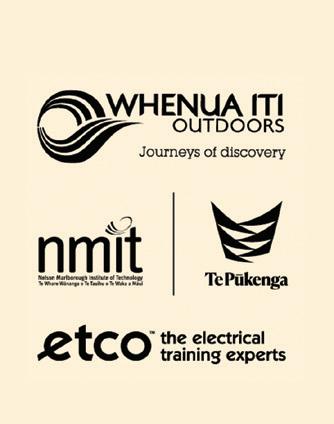

www.tradesacademy.ac.nz
Career Choices | Trades
TRAINING COURSES AND PRACTICAL ASSESSMENTS
Our aim is to make compliance more manageable for businesses and individuals by taking a fresh approach to learning and refreshing existing skills.
General Worker Inspector
TTM Worker


TMO (Non Practicing)
TMO (Practicing/Full Warrant)
Site Traffic Management Specialist
Universal (STMS – U)
Category A/B (Non Practicing)
Category A/B Practicing
Refresher - Category A/B (Non Practicing)
Refresher - Category A/B (Practicing)
Mobile

Sadliers Funeral Services
At Sadliers Funeral Services it is our desire to support you in your bereavement. We will assist you in creating a burial or cremation ceremony that celebrates the life of your loved one in a thoughtful and thorough manner. Our offices are open Monday to Friday from 9am to 2pm. We are here for you....

Phone. 022 081 6329 | www.learnttm.nz Phone 07 889 4333 | www.seddonpark.co.nz/sadliers-funeral-services
Highways

Highway 1 is a significant manufacturer and supplier of temporary traffic management equipment from safety signs, electronic variable message signs (trailer or truck mounted) traffic lights and many Bitumen Products. Traffic management, H & S, construction, Signage, carpark range products we have you covered.

We are here to help, have quality products and won’t be beaten by price. Give us a call 0800 175 571 or visit our website www.Highway1.co.nz
 and Byways - Highway1 has it all!
and Byways - Highway1 has it all!
Check

Road safety products
Cones, cone arms, flexiposts and bollards, reflectors safety fences, vests, sandbags.

Signs
We manufacture all temporary warning signs & personal protective signs (PPE) for all Sizes for hazards & safety requirements. Enquire & we will make it for you

Car park & workplace safety
Speed humps, wheel stops, channel cable protectors, Safety mirrors.

Asphalt & Concrete Maintenance
Bitumend range - Coldmix, Crackfix, Top seal, joint filler, Rejuvenate, E-release and applicator equipment.

Construction products
Bunting, marking tapes, line marking.

Electronic signs
AWVMS, Arrow boards traffic lights, Variable message Signs (VMS) and Truck Mounted Attenuators (TMA)

We have office’s in both Auckland and Christchurch, where you can visit and pick up or we freight through out New Zealand, and we cover insurance for free on deliveries.
out our product range at www.Highway1.co.nz
We offer a full 24-hour towing service, providing prompt, efficient and courteous attention to vehicle breakdowns and disposal needs.






1 Liffiton Street, Wanganui | Ph: 06 241 7266 info@wanganuitowing.co.nz | Mob: 027 443 5449 (24-7) www.wanganuitowing.co.nz BIG OR SMALL, WE TOW IT ALL!
SERVICES: All Vehicles and Bikes • Accidents / Breakdowns Crane Recovery Assistance • Machinery Lower NZ
(Wanganui, Taranaki, Central
and
24 HOUR TOWING SERVICE
vehicle transport
Plateau
Wellington)








































































 Education Minister, Erica Stanford
Education Minister, Erica Stanford










































































































































































































































































































































































 Webglas in school walkway applications
Webglas in school walkway applications



















 and Byways - Highway1 has it all!
and Byways - Highway1 has it all!











